Ep. 16: The Strange Tale of Panorama Island by Maruo Suehiro
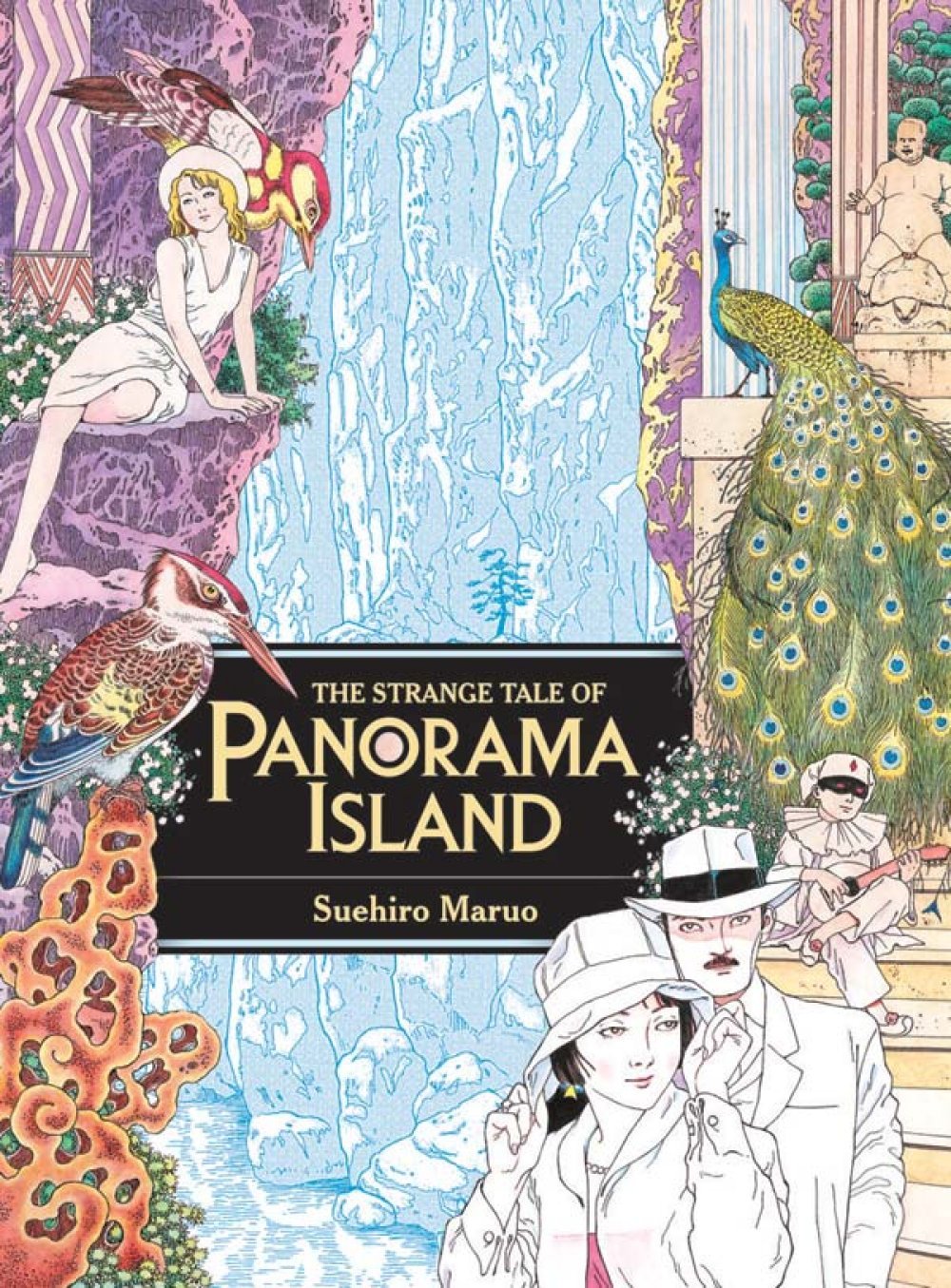
This episode marks a very strange week indeed, as the Mangasplainers dive into the nonsensical erotic grotesquery of Edogawa Rampo and Suehiro Maruo’s The Strange Tale of Panorama Island! It’s a doozy of a manga, based on a wild 1920s Japanese novella, and the show notes are jam packed with art and explanations! However, as exciting as it is, this episode (and show notes!) are recommended for readers 18+ only.
Powered by RedCircle
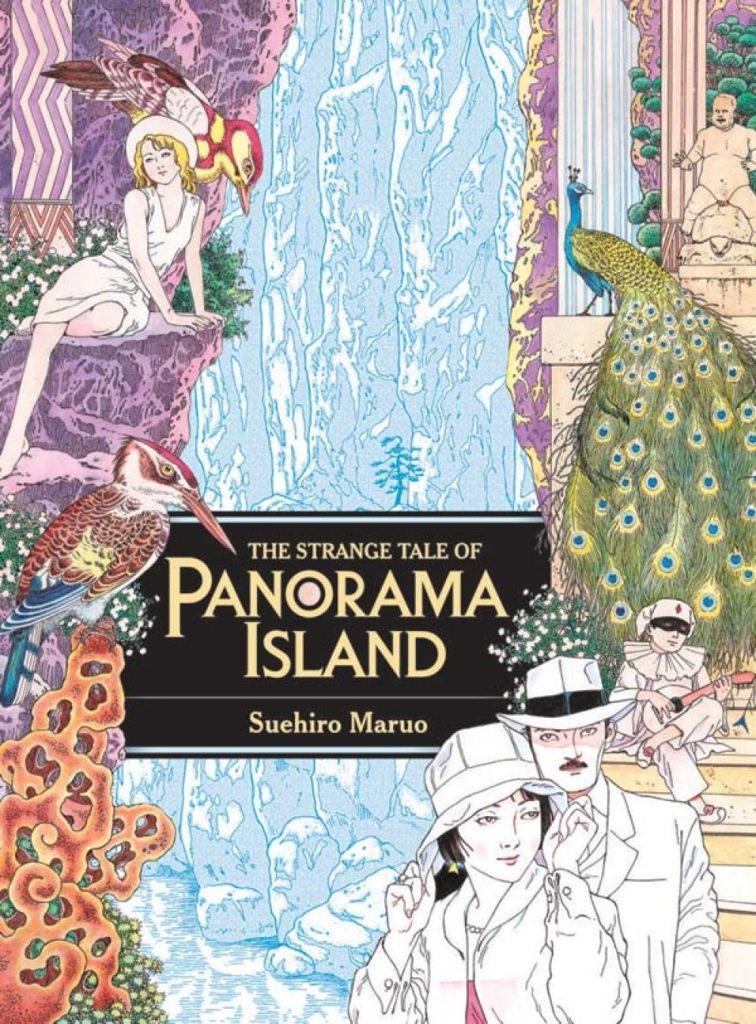
The Strange Tale of Panorama Island
By Suehiro Maruo. Adapted from the novella by Edogawa Rampo
Translation by Ryan Sands, Kyoko Nitta
Lettering, Retouch, and Design by Evan Hayden
Edited by Ryan Sands and Colin Turner
Published by Last Gasp (Print Only)
00:00: Before we get started! Deb not only hosted this week, but did a TON of background research and image gathering related to this book. As we move through you’ll see that was… a lot of work. So make sure to give Deb a bunch of love for all of her contributions to these show notes, even though it’s me (Christopher) typing them up.
Also special shout-out to Panorama Island publisher Last Gasp for being cool. You can (and should!) buy The Strange Tale of Panorama Island directly from their website, at https://lastgasp.com/products/strange-tale-of-panorama-island?_pos=1&_sid=6646425b0&_ss=r. It’s also available wherever like, manga is.
Finally, this is an adult work, and it has nudity and sex and death and PeRvErSiOn so like… We’re gonna mark this episode explicit on iTunes, and we’ve got lots of images from the book below. If this isn’t for you, don’t read these show notes and maybe skip this episode.
03:00: So Deb mentions, in rapid succession, Edogawa Rampo, Suehiro Maruo, and the Taisho period. While we end up talking about all three subjects throughout the episode, let’s set the stage here.
The Strange Tale of Panorama Island is a novella written by Japanese author Edogawa Rampo in 1926, almost exactly when the story takes place. It’s weird, this story is dated to 1926, it starts with the death of the Taisho Emperor on December 25th, 1926, so like, did he write and publish it in the 7 days before it became 1927? Was he magic? Maybe someone smarter than me can figure that one out.
Edogawa Rampo (1894-1965) was a writer of fiction beginning in the 1920s (real name Tarou Hirai). His name is a romanji play on “Edgar Allen Poe”, and Rampo is best known to the Japanese public for popularizing mystery stories, detective stories, and the like, after the war. In fact he even founded a Japanese mystery writers club, and held not only the work of Poe, but of Sherlock Holmes creator Sir Arthur Conan Doyle in high regard. During the 1930s, he began to turn incredibly towards stories that involved a combination of sensibilities often called “ero guru nansensu,” from the three English-language words Eroticism, Grotesquerie, and Nonsensical. Pushing the limits of storytelling to get at the core of what humanity is, that sort of thing. His work came under fire from the government during (and even after) the war, and he ended up moving from ero-guro nonsense to, the mystery stuff. He wrote basically Japan’s Hardy Boys and Nancy Drew, (”Boy Detectives Club”) and popularized mystery fiction in Japan. He also did a lot of work on homosexuality with his dear male acquaintance who also did a lot of work on homosexuality, and published a book on homosexual desire. He never married. So, draw your own conclusions. His work is held in high regard even today, among a certain set of artists, authors, and adherents of certain Japanese subcultures… like Suehiro Maruo. But we’ll get to him a little bit later in the show notes.
A quick explanation, most places (including Wikipedia) anglicize his name as Edogawa Ranpo, with an ‘n,’ however in this book the translators have chosen to anglicize it as Edogawa Rampo, with an ‘m’, and so we basically just honoured that since it’s the source we’re discussing. It has to do with Japanese language pronunciation, and it’s above my pay grade to discuss, but if you’re wondering why we went with ‘m’ instead of ‘n’ that’s why.

Also worth noting that Edogawa Rampo had a character based on him in the anime Bungo Stray Dogs, and that can occasionally muck-up searching for info about him on google. 😉
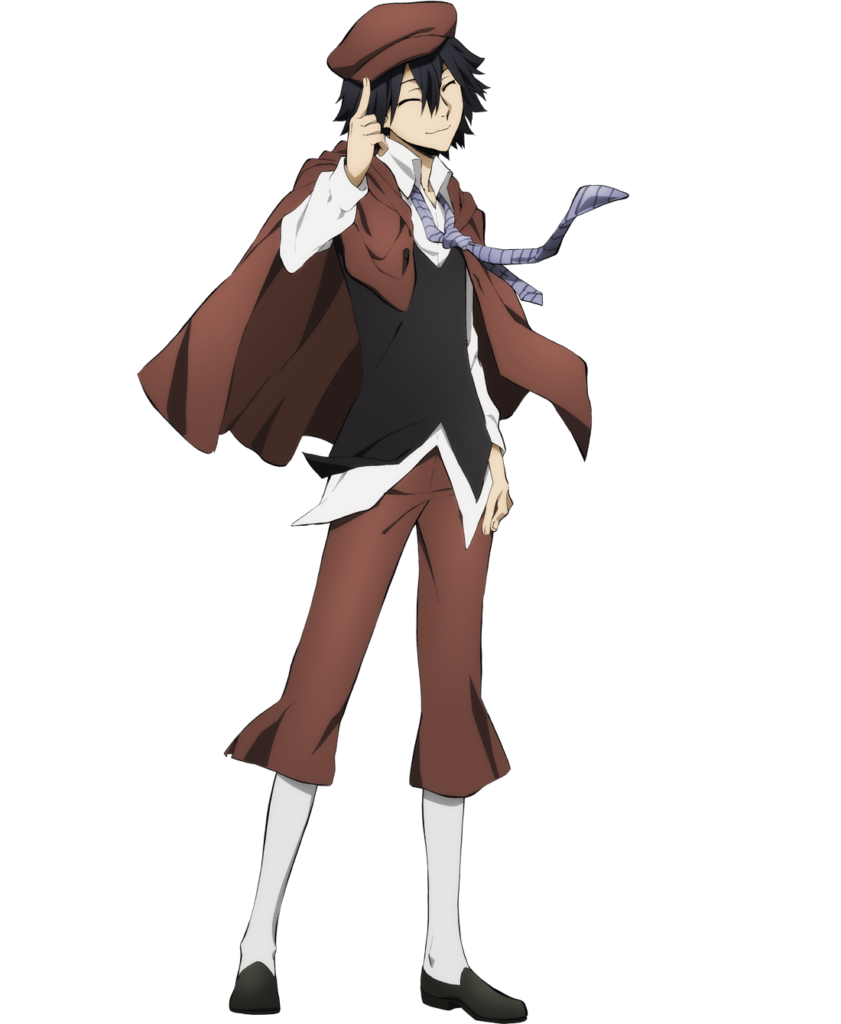
Meanwhile, The Taisho Period ran from 1912-1926, and is the period of rapid modernization/westernization that followed the opening of Japan’s borders during the previous Meiji Era. According to Wikipedia, it “is often considered a brief flowering of democracy in Japan before the country slid into militarism, ultra-nationalism, and totalitarianism in the early Showa Period.” As Deb mentions, it’s often compared to the era of the Weimar Republic in Germany (just before a slide into fascism), where art, culture, and sexuality flourished.
For manga fans, it’s worth noting that the current bestselling manga in the world, Demon Slayer: Kimetsu no Yaiba, is also set during the Taisho Period. The manga Golden Kamuy is seemingly set just a few years before it, likely in 1908 or 1909, and bears a strong Taisho influence. The era also plays into a number of Ghibli works, although it’s often harder to pin down time periods in those.
Here’s a fun article at ANN about Taisho-era fashion in Demon Slayer: https://www.animenewsnetwork.com/feature/2020-05-18/an-open-taisho-secret-demon-slayer-and-fashion-history-in-taisho-era-japan/.159667
And here’s a really neat blog post where fans try to pinpoint the year that Golden Kamuy takes place. Remember blogs? I love blogs.
https://kamuycentral.wordpress.com/2017/11/14/when-was-golden-kamuy-set/
As for this book’s adapting author, Suehiro Maruo, we’ll let those discussions come up naturally as the podcast continues, but we’ll drop in with a full biography a little later anyway, just in case you love… text.
05:35: He liked it!
06:50: The movie Dave referenced on Mangasplaining. The anti-Dave. https://en.wikipedia.org/wiki/Dave_(film)
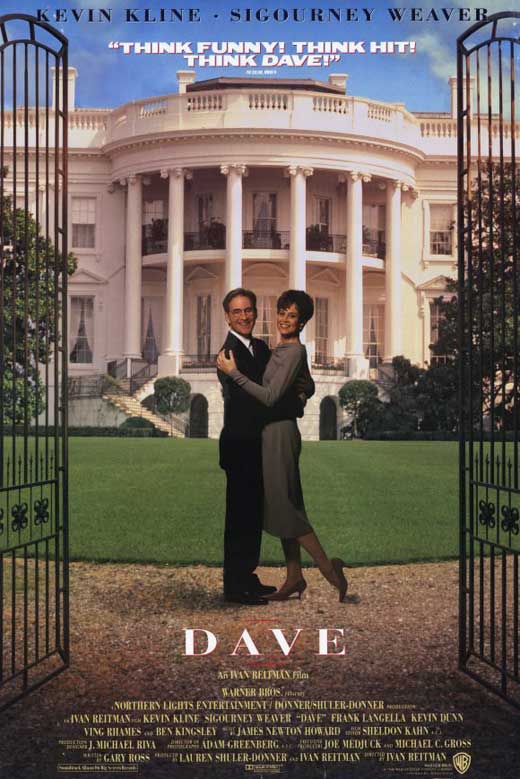
07:45: There are a LOT of references and commentary in this manga, and I personally caught many more this time than the first time through. Maybe someone should start a blog and chronicle all of them… Anyone know any art history majors with free time?
08:16: They don’t need brick anymore. This really is a very specific statement that not only has an era ended, but the new one has already begun. It was the business of writers to dream the new world, and that’s at the core of this novel. There’s a lot of this, a lot of setup, a lot of talk about what the new world will be, that, written in 1926, is deeply prescient.
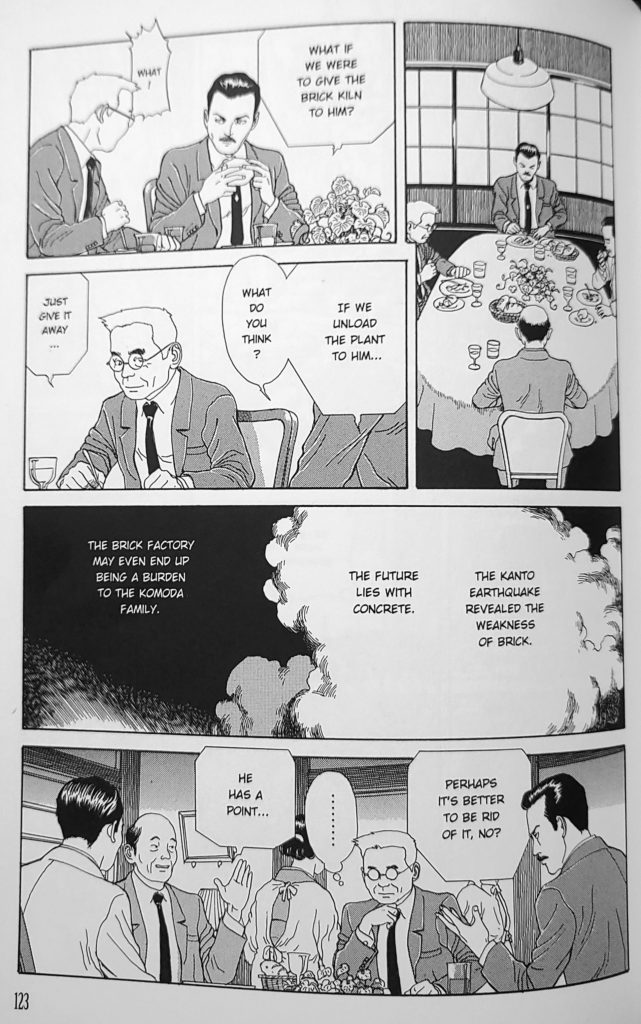
09:20: SPOILERS. So many SPOILERS.
So yeah, there’s a rain of blood at the end of the book, and there are some fireworks… It will become clear how the two are related.
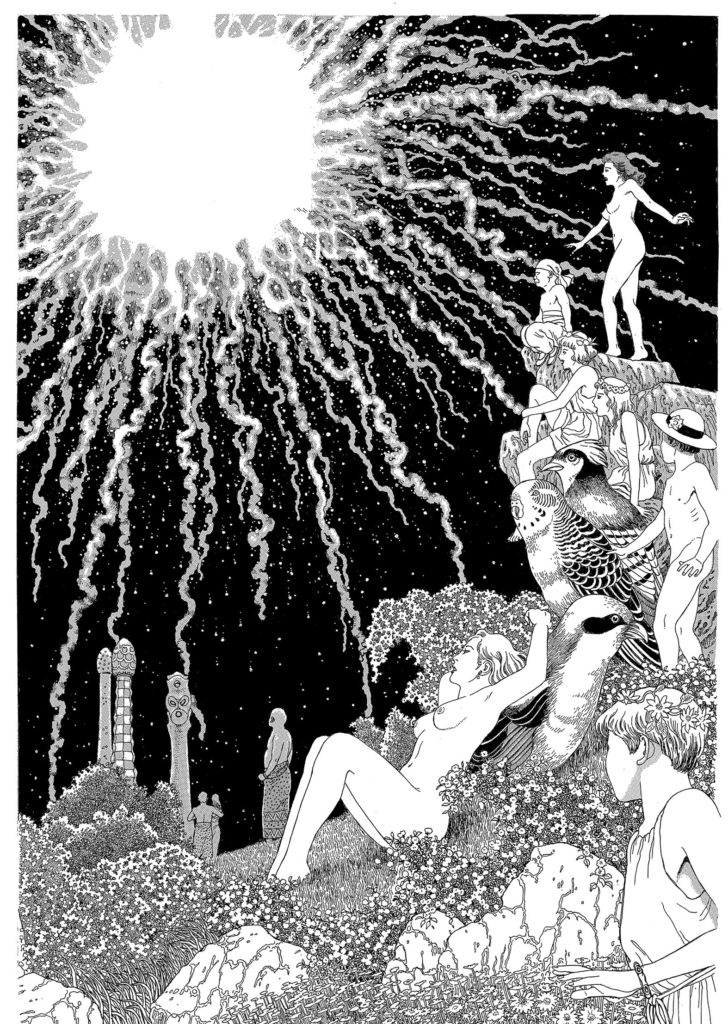
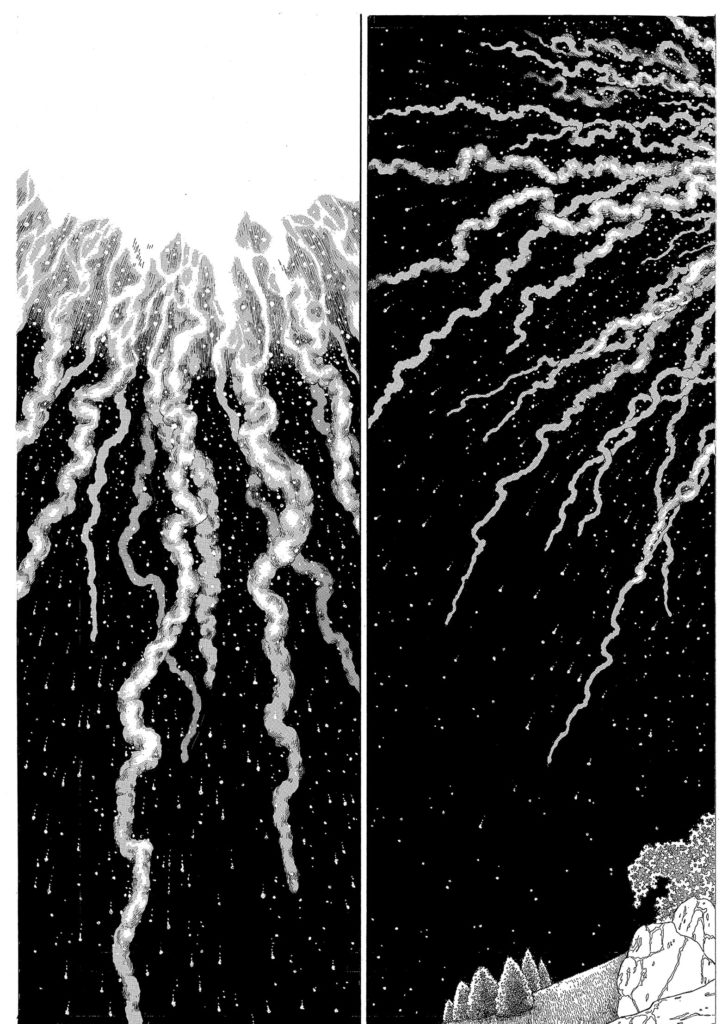
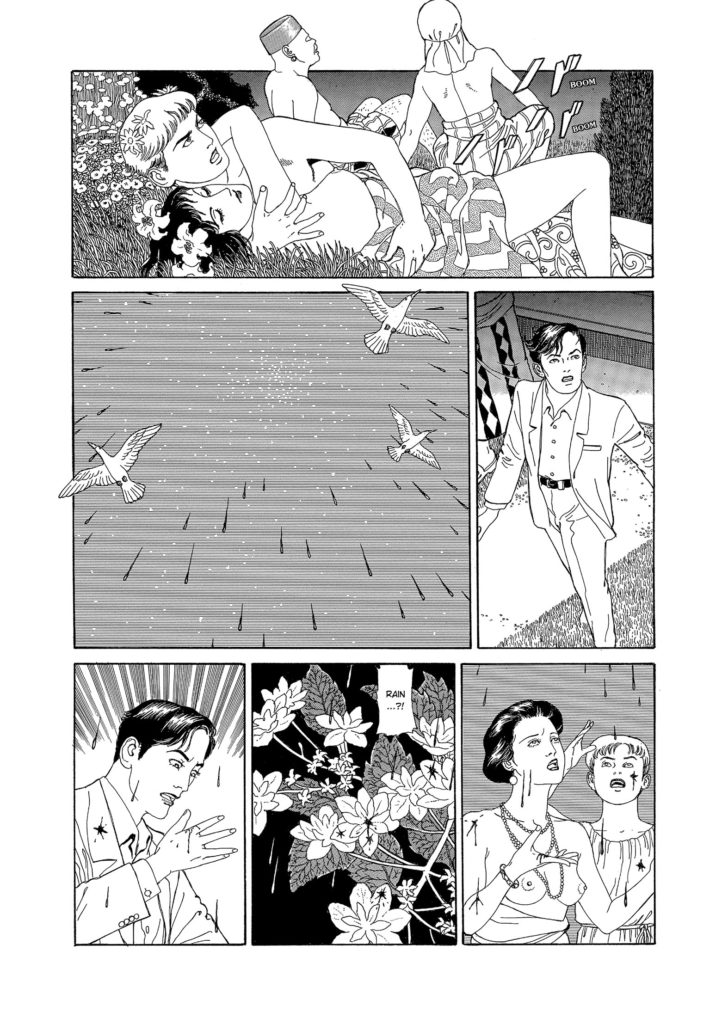
11:10: It’s true, The Beguiling Instagram used to run “The Best-Smeller” each week, and have a customer pose with a book that they thought smelled really, really good. If you’re a book person you get it, and it you’re not, well, this must seem insane to you, but certain ‘new book smells’ are really, really nice. 🙂
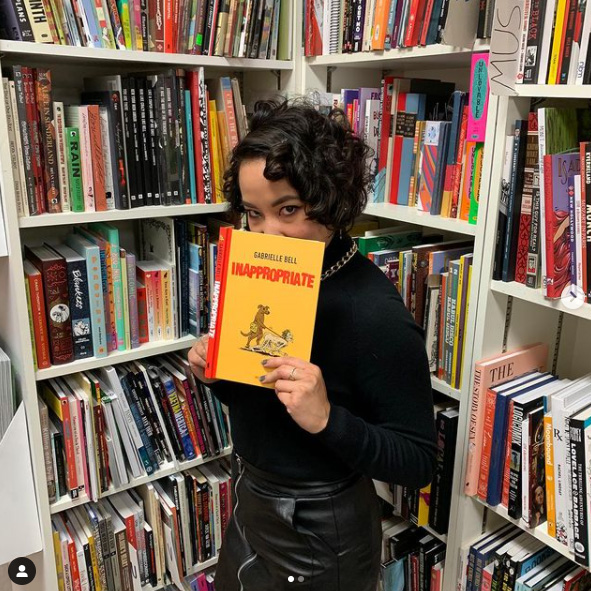
13:00: So that detective! That’s Kogoro Akechi, the start of Rampo’s popular detective novel series, and the mentor-figure to the younger lad who ends up starring in Boy’s Detective Club. Basically his 1920s-era Sherlock Holmes character just shows up at the end of this book to unravel the protagonist’s plan. It’s kinda wild, an inversion of the Detective trope, as David mentioned.
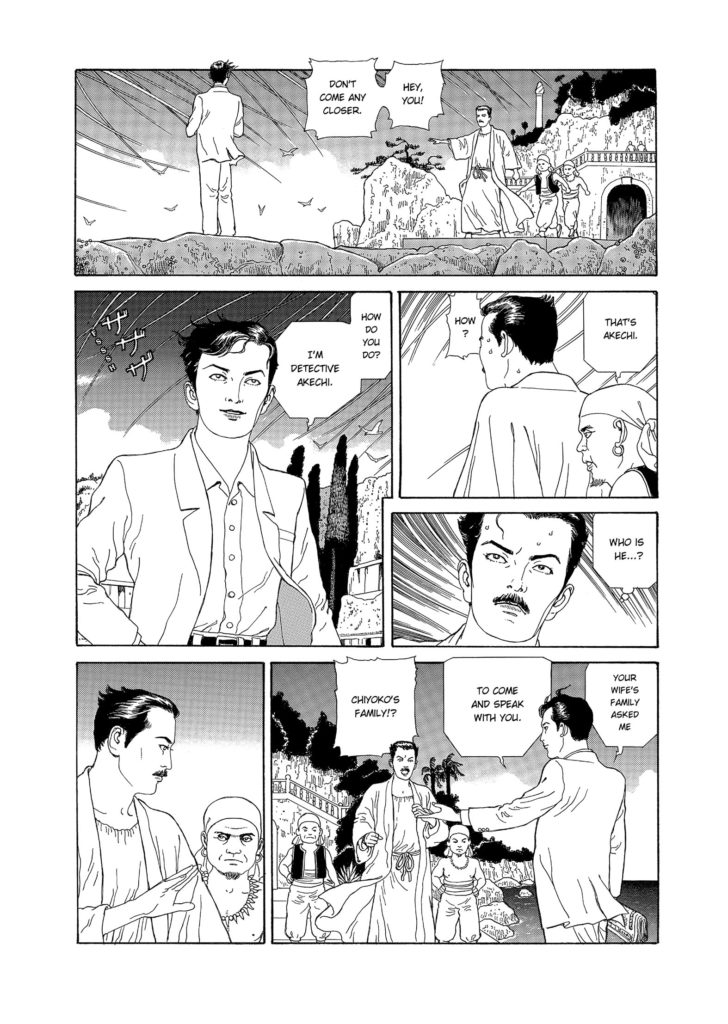
14:05: That layout in spiral is just crazy, and just isn’t really strictly necessary, but adds to the unease of what’s going on in a great way. All of his layouts do, honestly. Check this out.
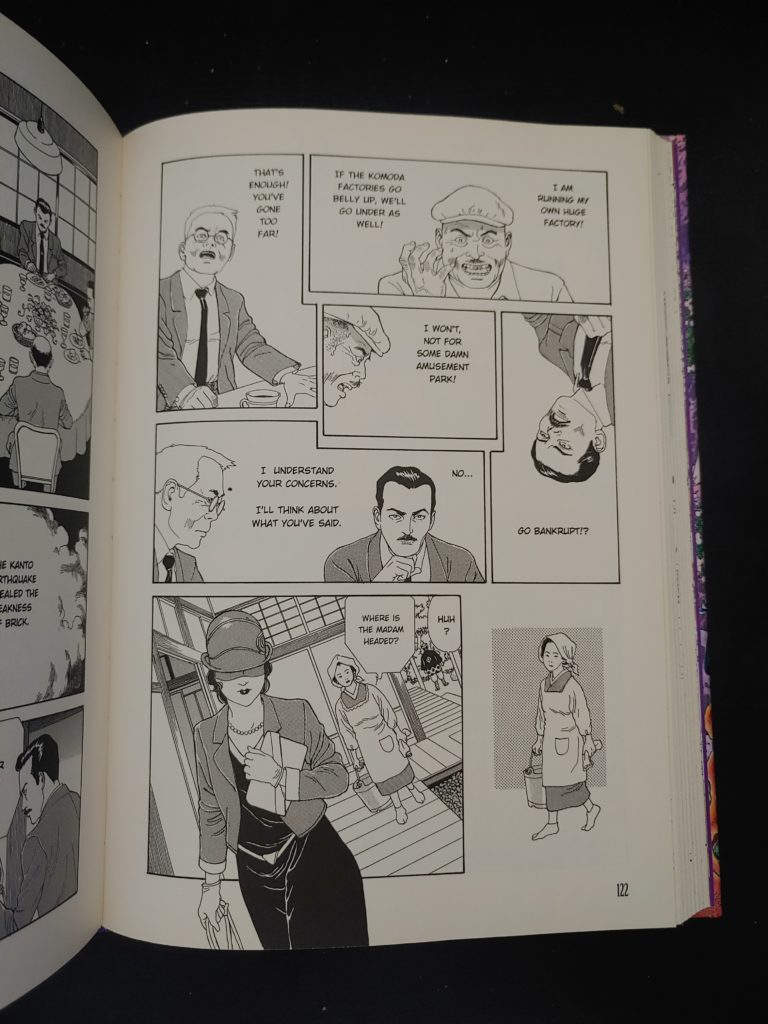
14:47: So yeah the art mentions come fast and furious this episode, and given the lack of digital edition and the difficulty obtaining the book in some countries, we’re mostly showing the art here. I think everyone is cool with that, but if not, we can take down art if necessary. So yeah, here’s page 52, with the real Komoda’s dead body laying in the grave with the snake.
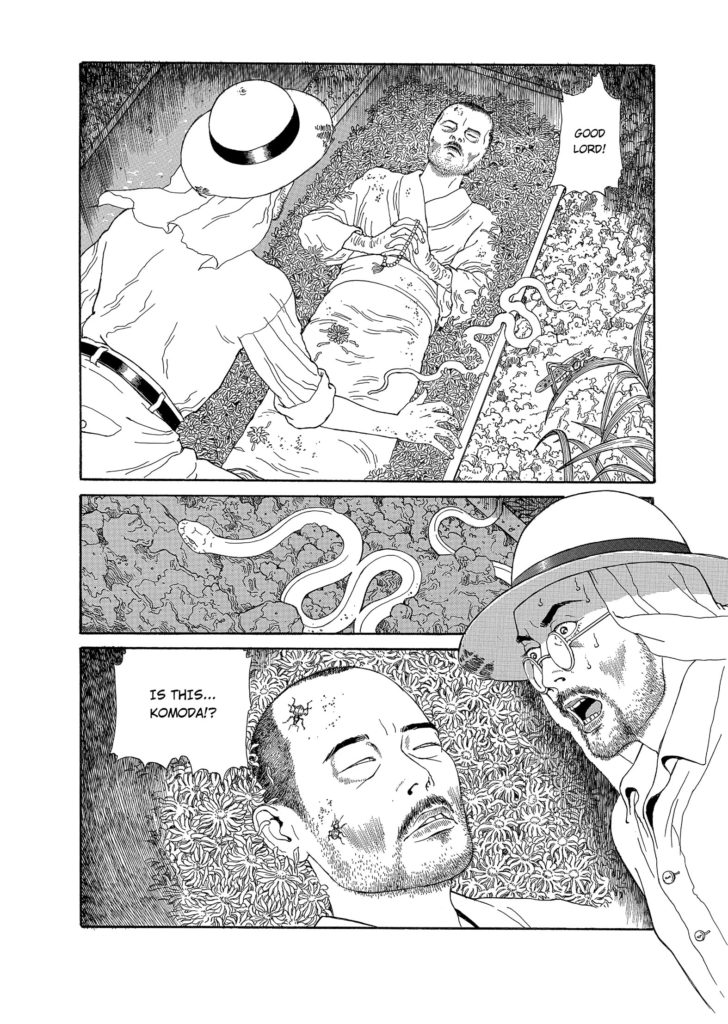
15:30: End of Chapter 2, he did, in fact, get away with it. For now. Page 64.
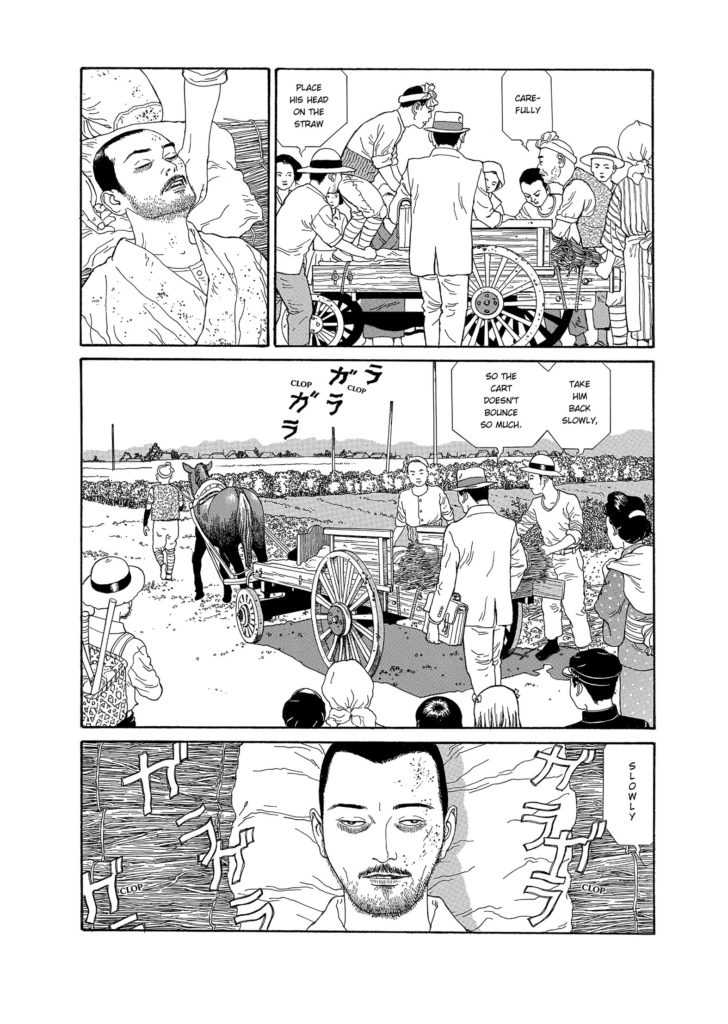
15:50: Silent train ride, full of atmosphere, asking you to slow down and enjoy it, on page 152. We talk a lot about this later in the podcast, but there’s a ton of ambiance, of beautiful images you’re meant to linger on, to absorb, and contemplate. This is structured completely differently than anything we’ve read on the podcast to date, and we might not see it’s like again until we get to Jiro Taniguchi’s work in a few weeks.
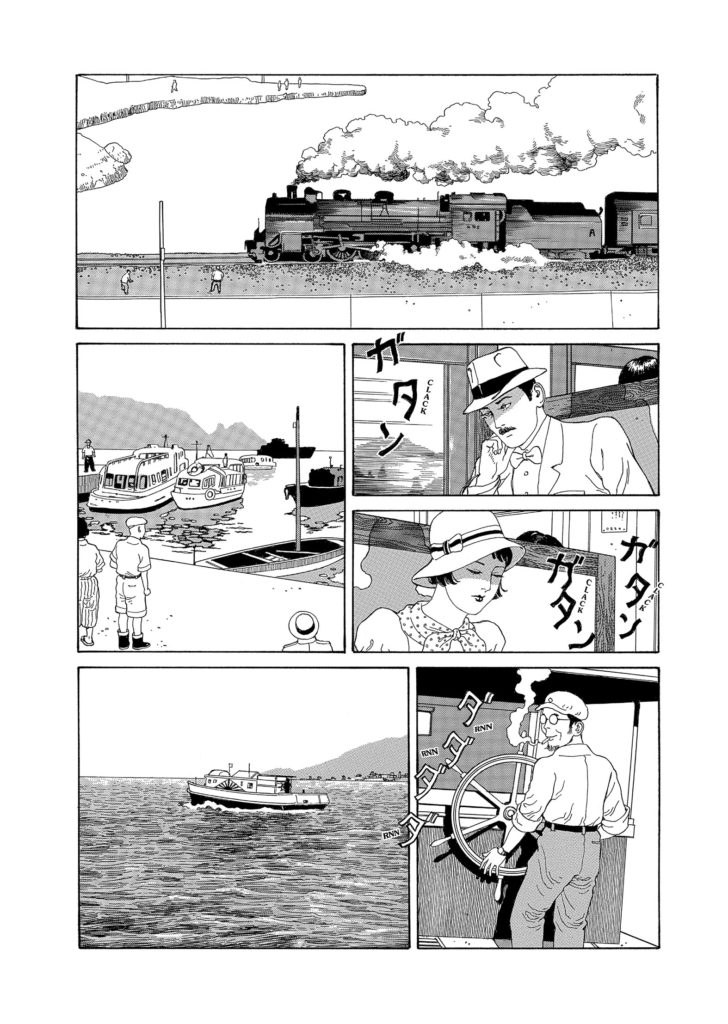
16:30: Ryan Sands and ‘Same Hat!’ Ryan’s been a very prominent supporter of arty, indy, underground manga, and even ran (runs?) a small-press publisher Youth In Decline, too. I believe he was the instigator of getting this particular title into English. You can find out more about him at https://www.samehat.com/ and http://www.youthindecline.com/. I just checked Same Hat, and it looks like his last-ever update to the blog was about this very title.

Lotta blog links this episode.
17:20: Page 17, clock on the side of a department Store. If anyone knows what department store this was, I’d love to know.
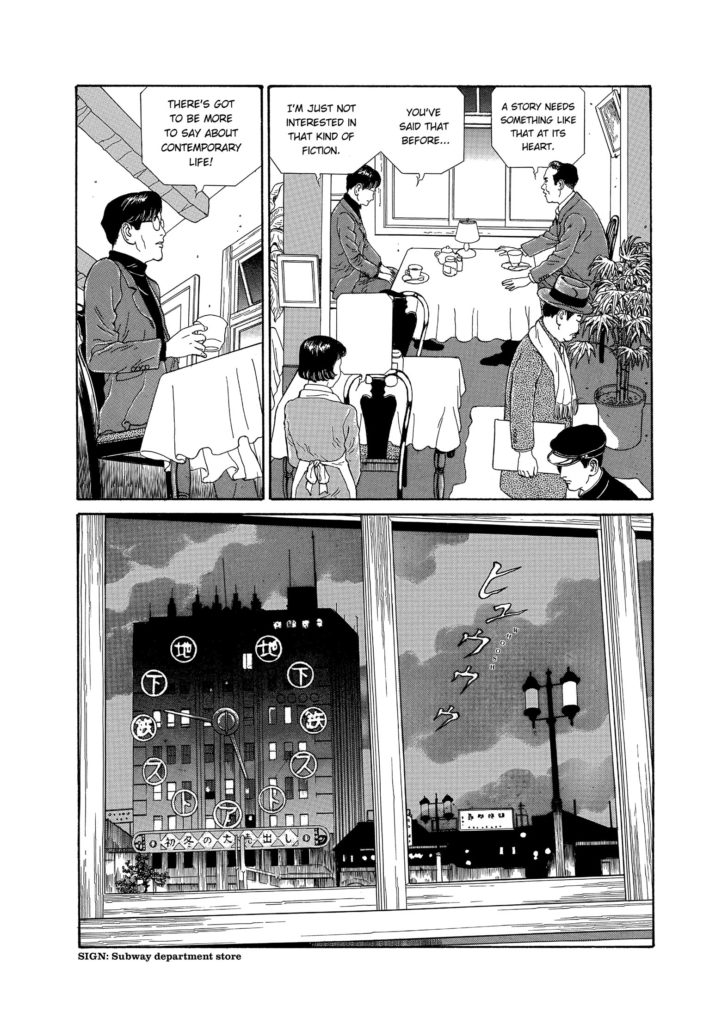
Page 18: Then a young lady in repose, and a photorealistic illustration (meant to represent a photo) of Edgar Allen Poe. There’s a strong ‘thinly veiled autobiography’ vibe to the first half of this book.
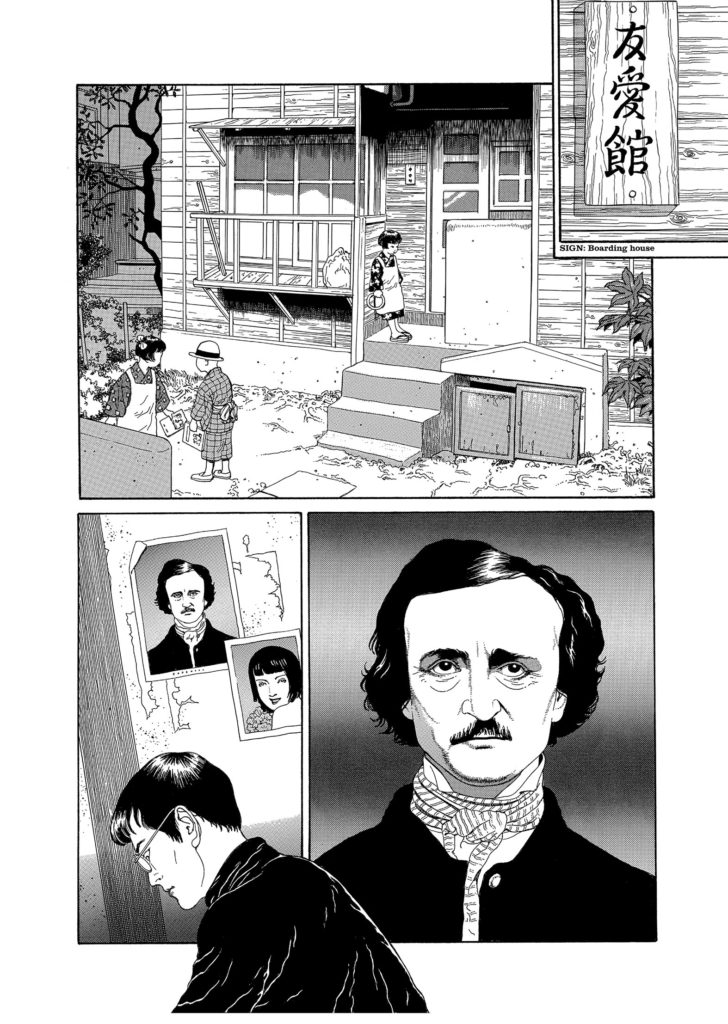
19:30: As I mentioned there really are a TON of artistic allusions in this book, we talk about them throughout the podcast, but here’s the first few that Deb found:
Are you familiar with The Death of Ophelia?
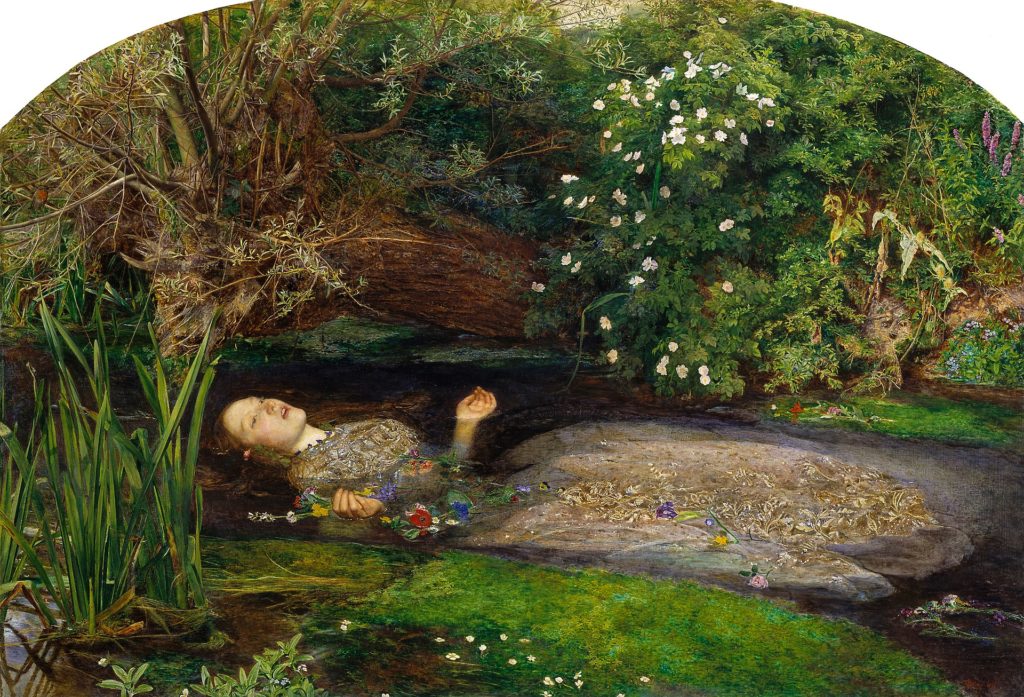
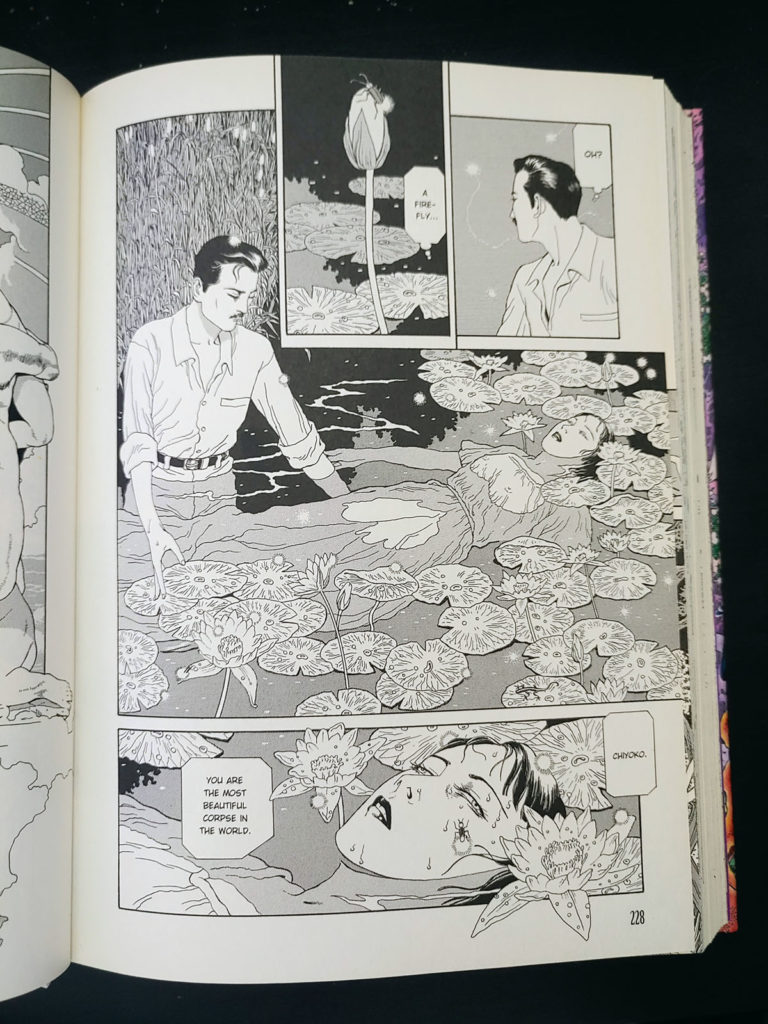
Garden of Earthly Delights by Heironymous Bosch (Crop)
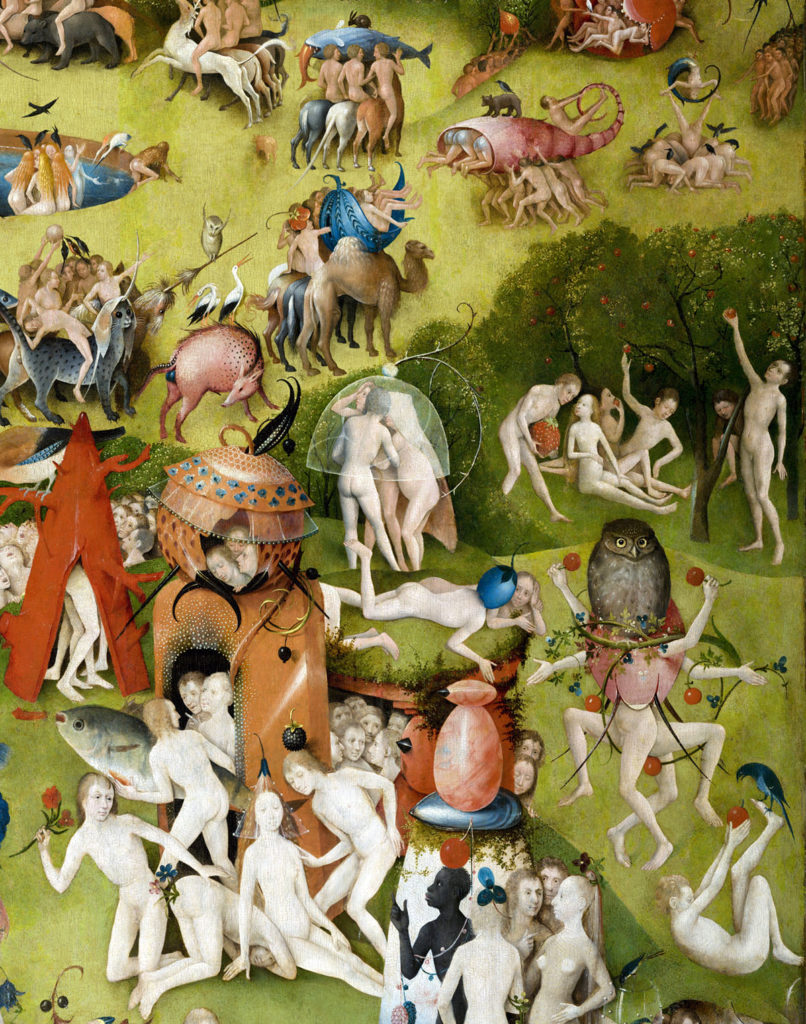
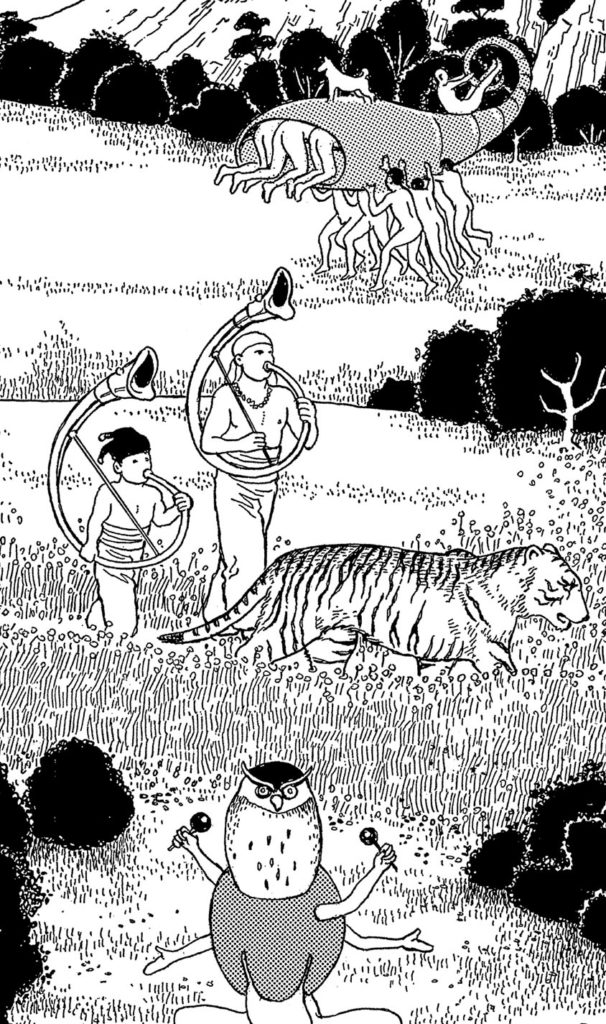
Maxfield Parrish, Thunderheads
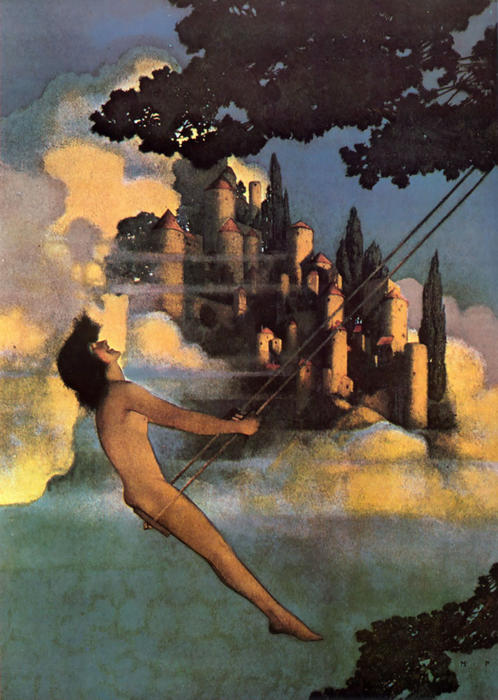
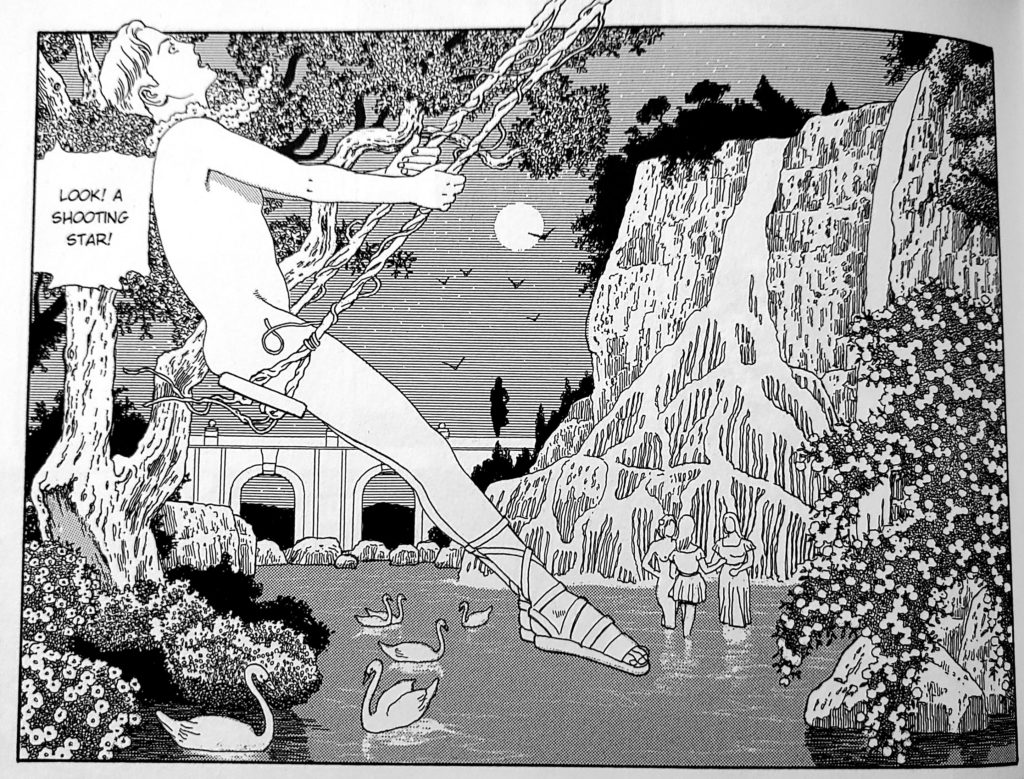
There are many, many more. I spotted another 2 art references while I was looking at the pages to grab these images.
20:00: “I knew I should create a sensation, gasped the rocket, and then went out.” I’m calling an Oscar Wilde reference on that one.
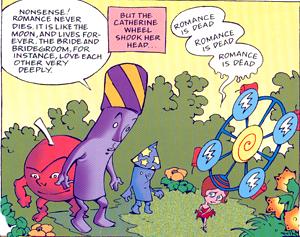
21:21: Fucking Cringe moment. I thought that Maruo drew this in the 1970s, and my co-hosts gently correct and comfort me. SORRY I FUCKED THAT UP SORRY EVERYONE. Probably should have saved myself the embarrassment and asked David to edit this section out, but no, we’re bringing this show to you warts and all. Enjoy.
For real though, sometimes we make mistakes. We do our best to correct them at the time, and then here in the show notes, but, well, please do additional research. 🙂
24:17: Moving right along, I’m kind of surprised that it took 16-or-so episodes to reference Maruo’s Mr. Arashi’s Amazing Freak Show and the anthology Comics Underground Japan (which also contains a Maruo short). These two very, very out of print books of risque manga kinda-sorta introduced eroguro manga to North America. They were big hits in the counterculture and I remember them being staples at The Beguiling for a number of years, even after they’d gone out of print. It’s no surprise that they’re out of print today, that’s not really where like, the culture, is at right now. But if you like fucked-up shit (in compelling manga format) and have hundreds of dollars to burn, those are two books you can buy. Actually, 3 books. We forgot to mention Ultra-Gash Inferno. 🙂
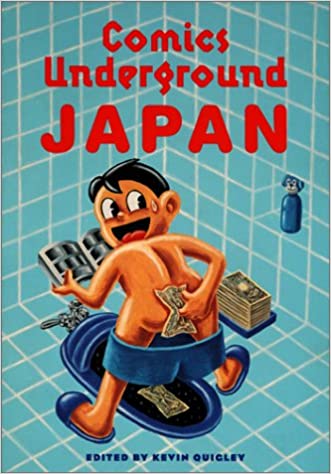


25:00: Yeah the Mr. Arashi’s Amazing Freak Show animation/live-action was a hallmark of underground video stores in the 90s and 2000s. I remember being invited to watch them often, and politely refusing. I have kind of a low tolerance for gore.
25:50: So here Deb references her personal history with Maruo’s work. She was introduced to it at her friend Guy’s alternative record store in Honolulu, Animals Ate Them, where she also discovered Japanese noise bands like The Boredoms. Specifically, she encountered John Zorn’s Naked City/Torture Garden EP liner art, which featured an illustration by none other than Suehiro Maruo. (<– It’s especially gory, so click the link if you want to see it, but remember, you were warned.) The cover was slightly more commercial than this illustration, which appeared inside. Maruo had gained a real cachet in alternative and underground art circles thanks to appearances in magazines like Juxtapoz, and that drove the interest from Western readers. The Beguiling was pretty deep into this scene while I personally worked there, and that’s where I discovered his work (and many other unique creators).
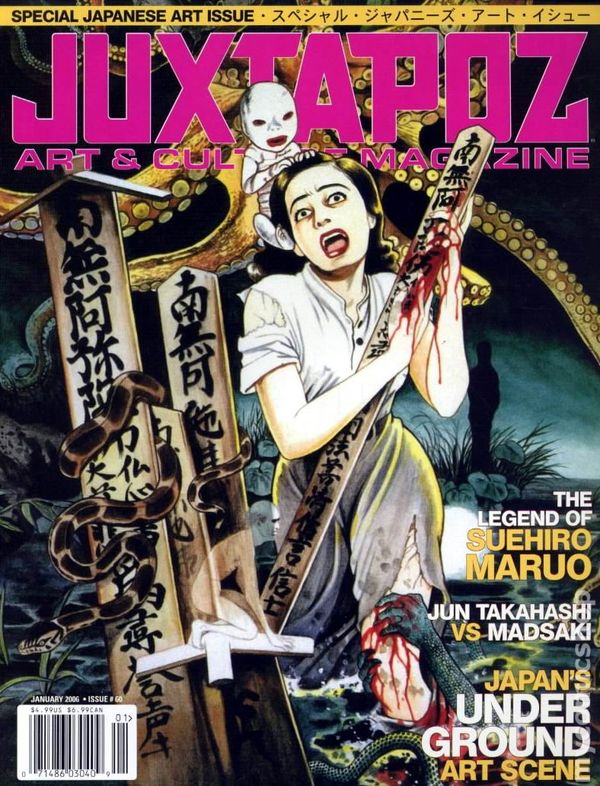
26:40: Meanwhile, back to the book. The protagonist pulls out his own tooth on page 57 to match the dental situation of a corpse. It’s a lot. It shows that this story is gonna go off the rails at some point, even moreso than pretending to be a dead guy.
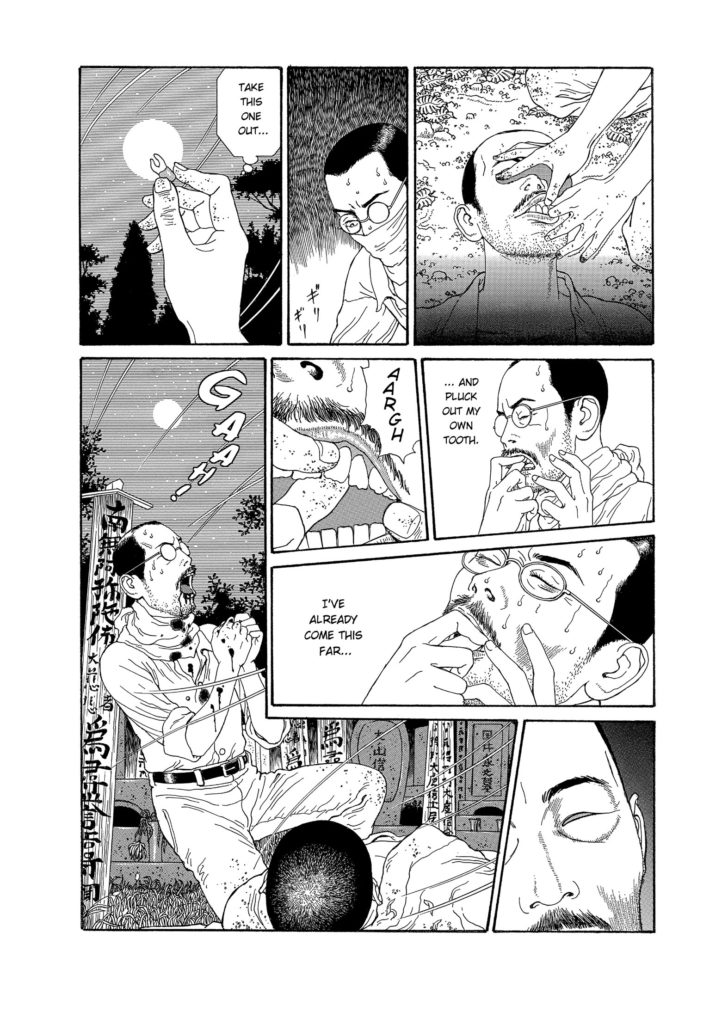
Also going back to the biography of Rampo, I re-read this scene just now while writing the notes, and the protagonist is speaking to Komoda’s dead naked body and says something to the effect of “Do you remember when we were closer than family?’ and that’s a pretty big pointy lit up arrow of an indicator about this character, and Rampo’s opinion on male-male relationships. Sometimes you and your roommate in college become closer than family, y’know?
28:15: The story from Sandman that David mentions is Death and Venice, by Neil Gaiman and P. Craig Russell, from the anthology Sandman: Endless Nights, and yes, it’s just as ‘decadent’ as Panorama Island, after a fashion. It’s funny that David mentions this story, as P. Craig Russell is one of my favourite comics creators and it could be argued that his style of work isn’t totally dissimilar from Maruo at least on a surface level–his content interests are very different than Maruo’s. 🙂 Anyway bringing this full circle, he did an adaptation of Wilde’s Remarkable Rocket, which I mention above. Comics!
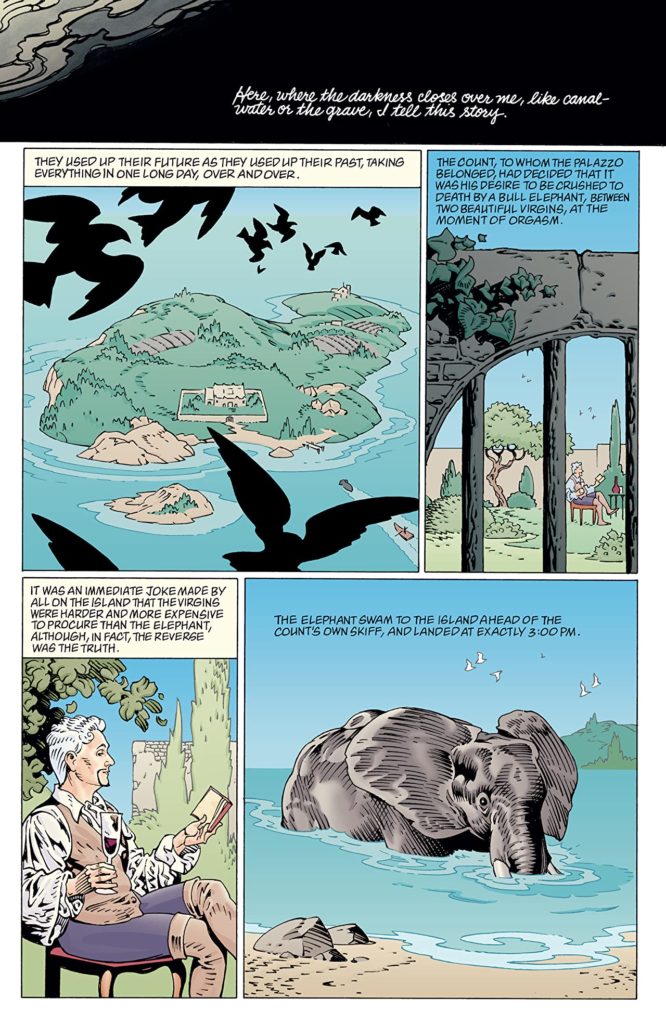
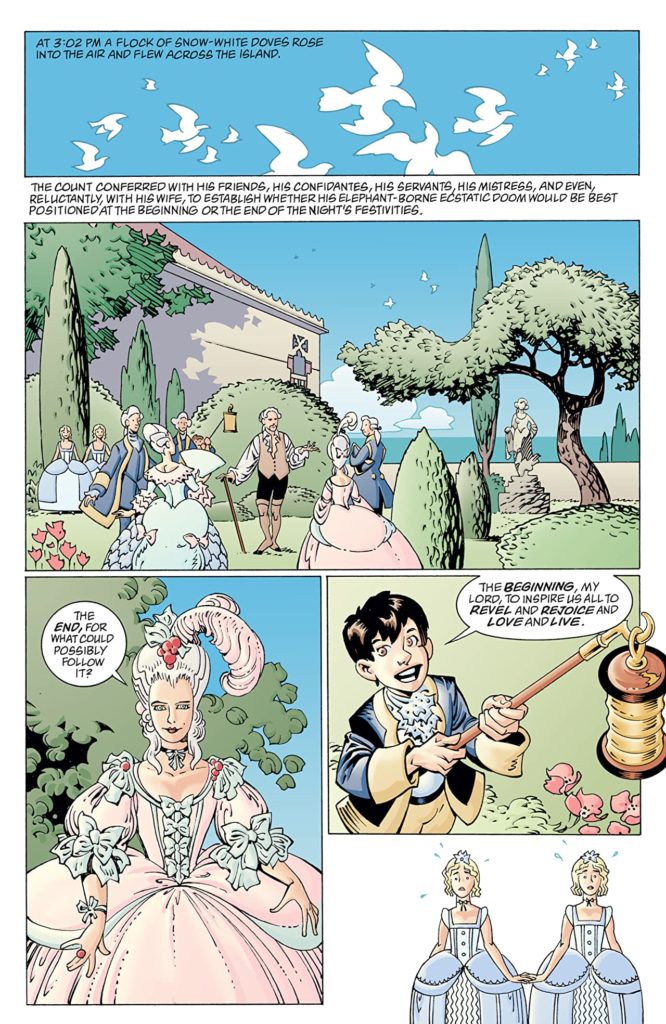
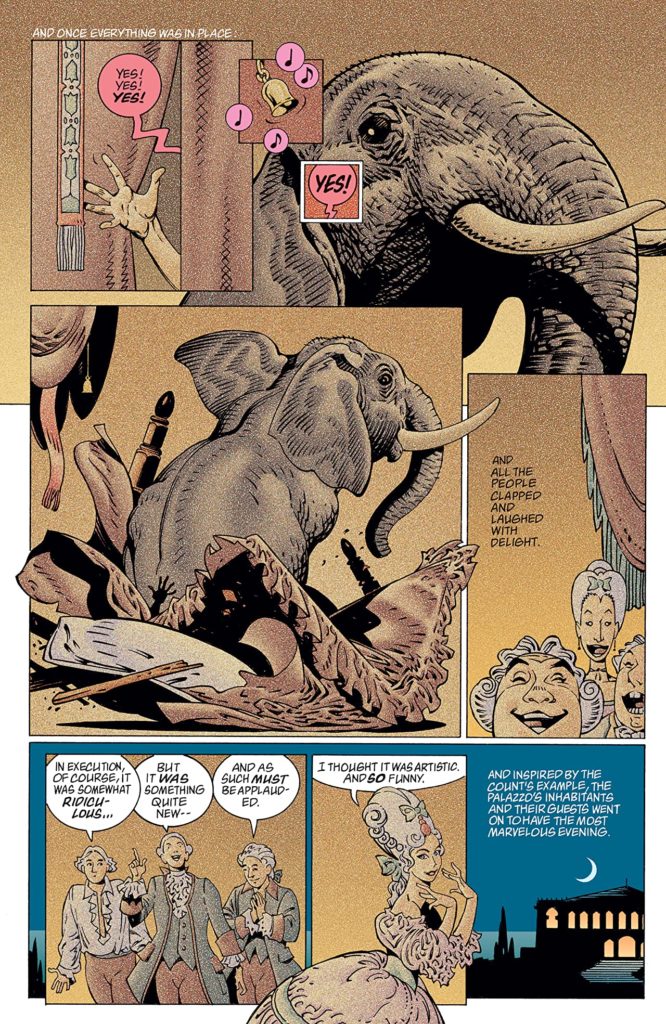
Just writing and listening to this, and yes, absolutely divine decadence is a theme this episode. Can’t believe I didn’t reference Cabaret or Three-penny Opera this episode, considering the time period and the level of decadence. Missed opportunity.
https://www.anothermag.com/fashion-beauty/9477/the-divine-decadence-of-cabarets-sally-bowles
29:00: There is a lot to say about how embracing fantastic Western ideas in this book immediately means embracing colonialism and booting a bunch of people out of their homes (and ends in murder/suicide). It’s interesting to see Rampo observe these behaviours that he can see growing in society at the time and integrate it into this story. It really does feel prescient.
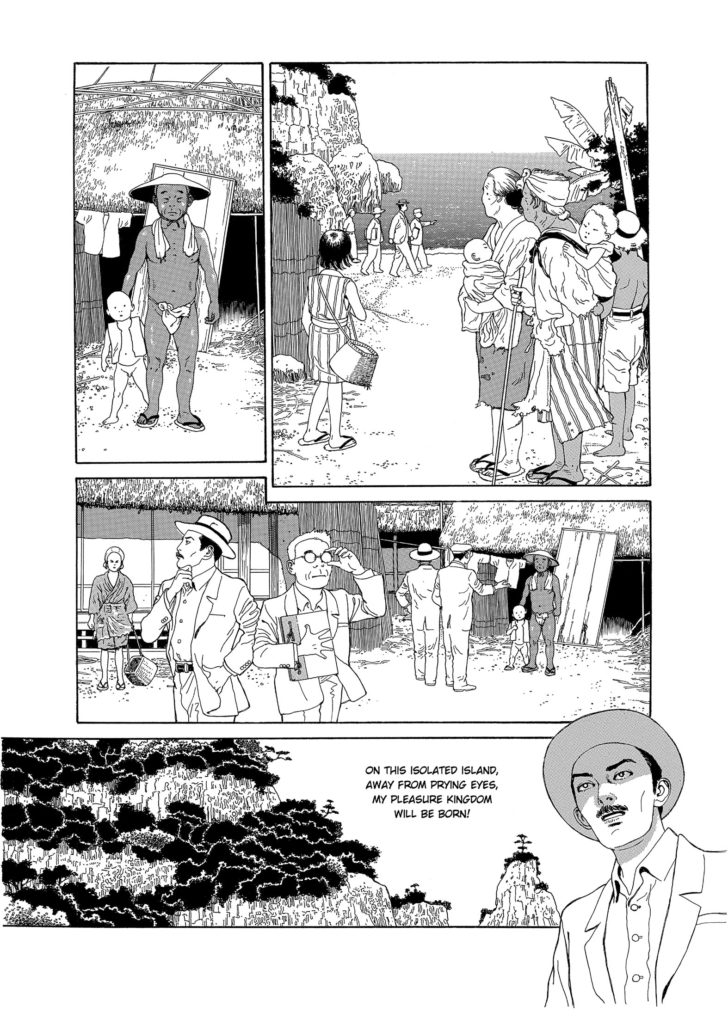
29:25: The white dude speaking English with a different font on page 134 is legitimately a lol moment, and a good use of typography.
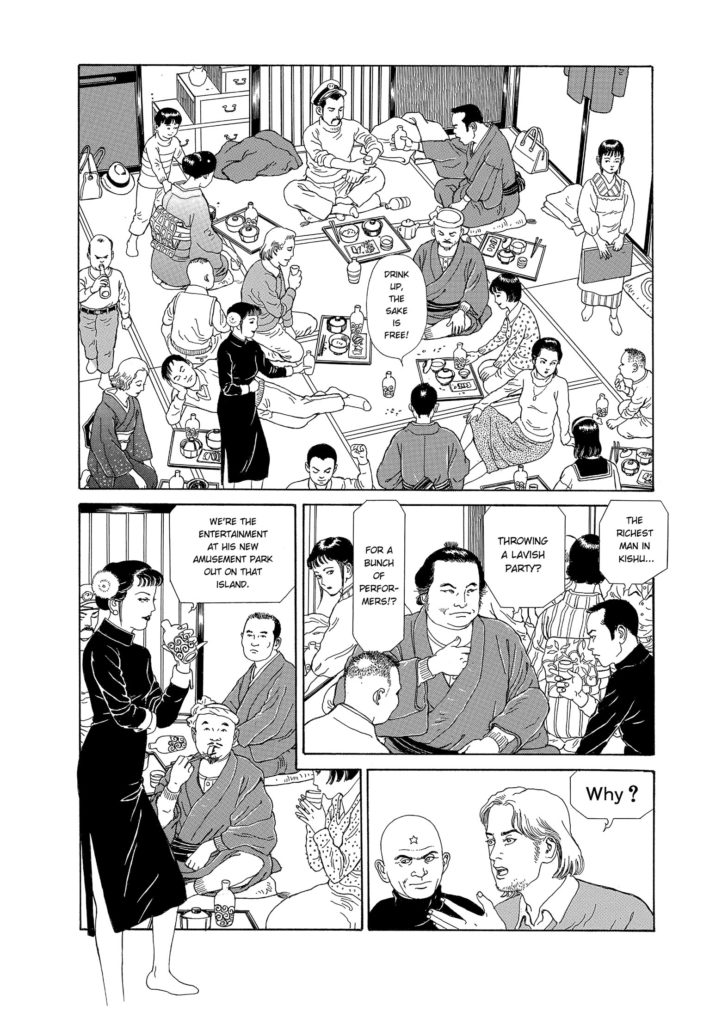
31:00: Yeah we’re spoiling every aspect of the ending here, but honestly, it’s really the journey that’s important. But that said, shocked face, drenched in blood, hand on the ground.
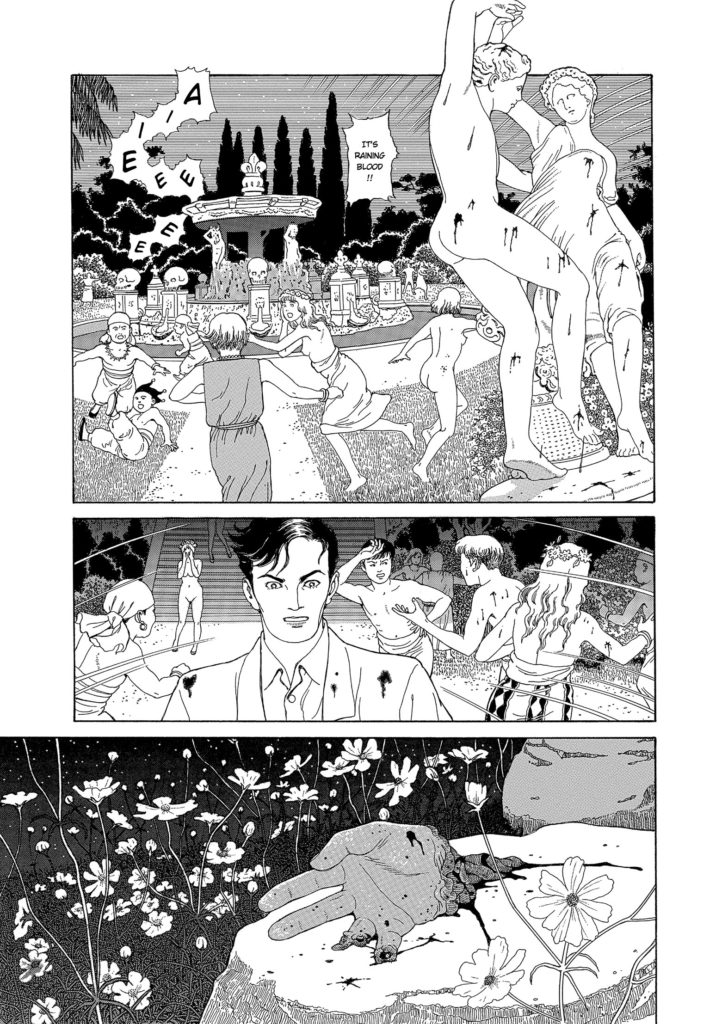
31:15: Also interesting note about the great French fictional detective Hercule Poirot, in perhaps his most famous case, detailed in The Murder on the Orient Express (1934), the murderer(s) actually do get away with it, leaving him as dazed as the detective here. The rare example of the detective not getting his man. 🙂
31:20: We read Kyoko Okazaki’s Helter Skelter on Mangasplaining Episode 4. It also had a detective that was, in retrospect, probably inspired by Detective Kogoro or the archetype he established. Good observation on Chip!
31:25: Christopher with another swing and a miss. Rough week.
32:30: So as David mentions, there’s a weiner on the cover of this book expertly buried in the book’s binding.
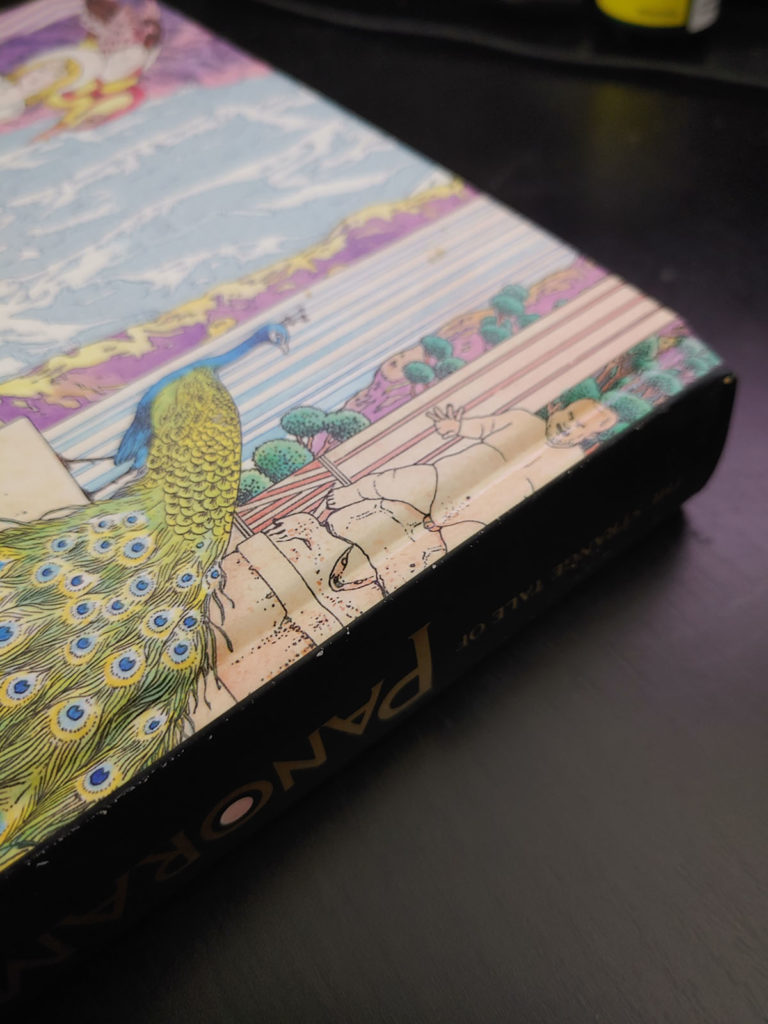
It’s a statue of Bacchus, the roman god of Wine and Agriculture and Having a Good Time, Riding a turtle. I think the title is “Bacchino of Florence”, sculpted by Valerio Cioli in 1561 by Cosimo I de Medici. I can’t believe I was in Florence and didn’t go see this statue.
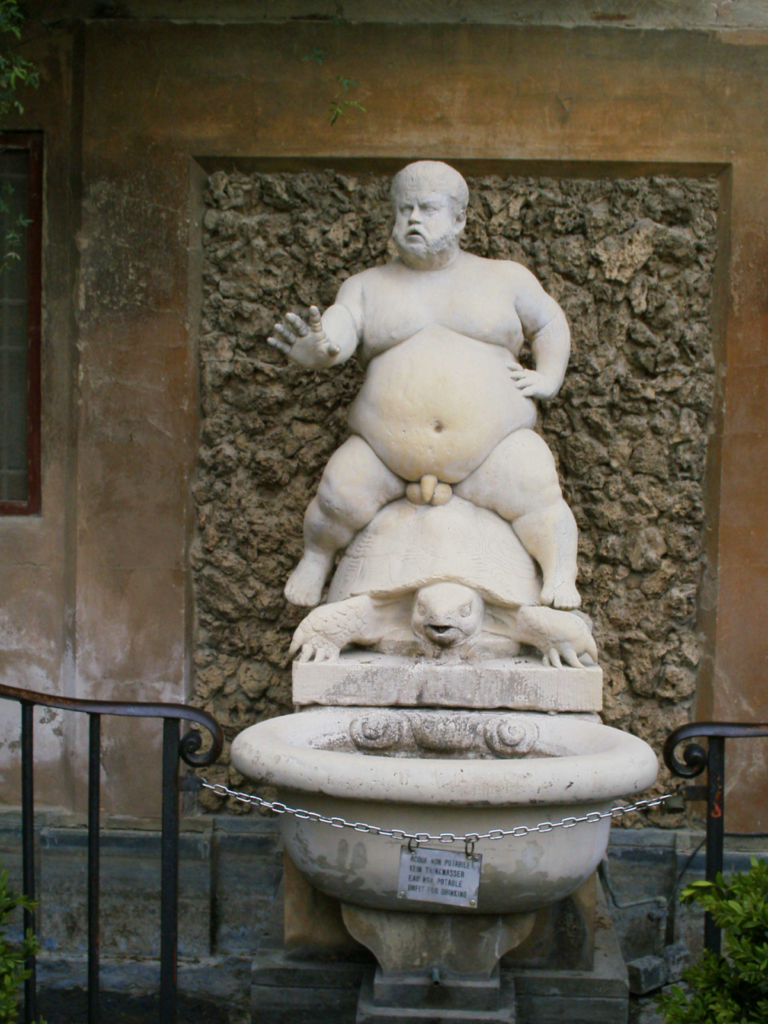
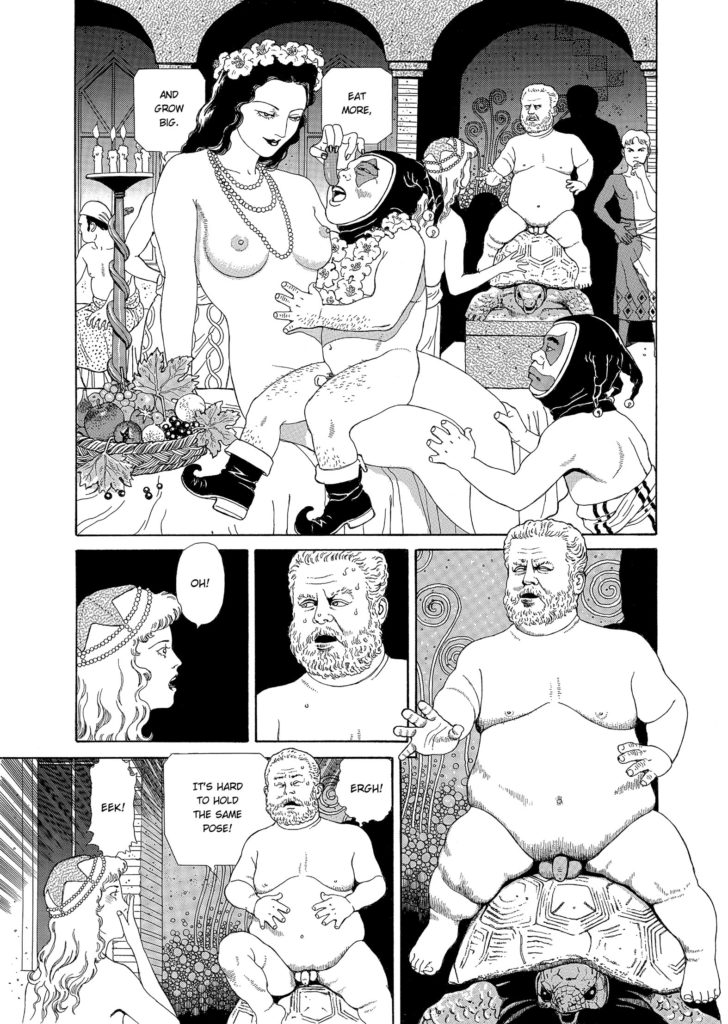
Speaking of the cover, we did find lots of illustrations of advertising art from the 20s and 30s that look an awful lot like Chiyoko on the cover of this book.
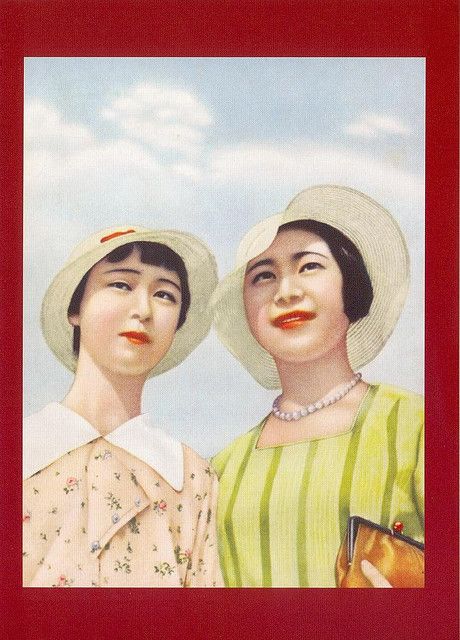
I do reference a few other images I found and pasted links into Chat during the podcast, but I’ll be darned if I can find them now. I’m really sorry folks, there was one that was the spitting image of Chiyoko and Komoda on the cover.
34:18: This is it! The very first show notes request we’ve ever gotten! Let’s do this thing.
“On page 109, they juxtapose Chiyoko with a very specific mask. Can you tell our listeners what this mask means?”
And I could dig in but Deb basically just covers it. But since David asked… This is a Noh mask, signifying the “maiden” as Deb says. According to my research (which, Noh is an art form that’s been around since the 14th century and people devote their entire lives to it so like maybe my research is barely adequate for an aside in podcast show notes, **breathes**) this is an Onnamen Noh Mask, with a slight smile, which would imply that the character wearing the mask in the performance is in love. So I’d say given the very sexual nature of how Chiyoko is portrayed on pages 108-109, and the Noh mask, and her waiting up for (but being told not to) Komoda, I’d say she wants her husband, but he (clearly) is not there at this point. Because he’s not her husband and afraid of being found out.
FWIW I’m pretty sure that the birds and flowers specifically mean something too.
Learn about Noh: https://japanobjects.com/features/noh
More about Noh masks specifically: http://www.historyofmasks.net/famous-masks/noh-mask/
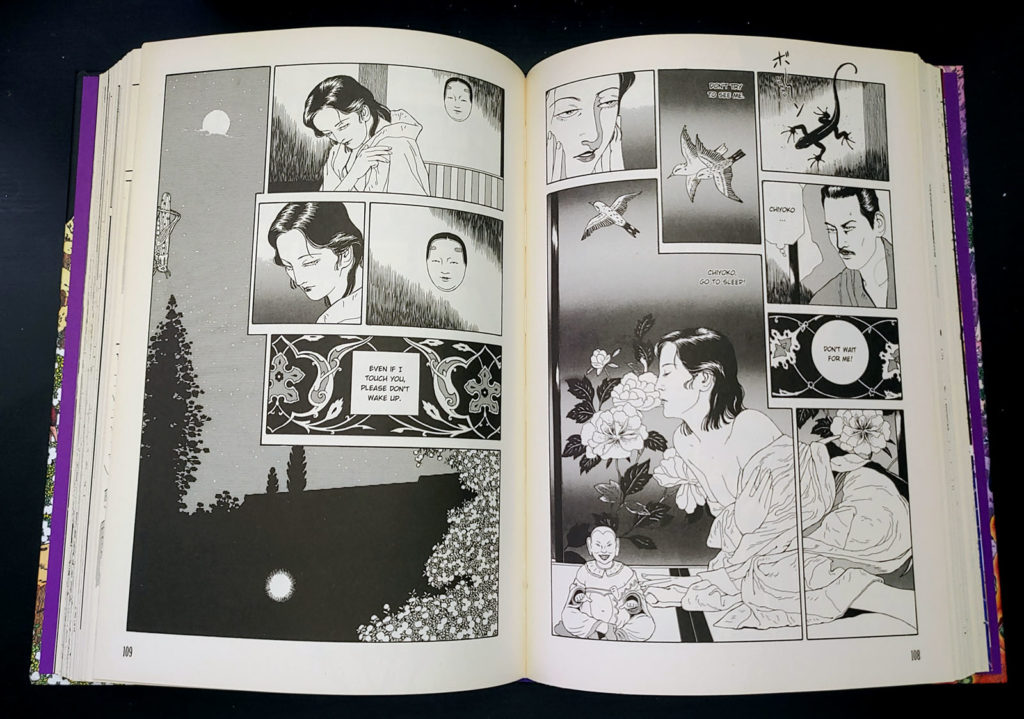
35:40: That’s a creepy fucking doll on page 108.
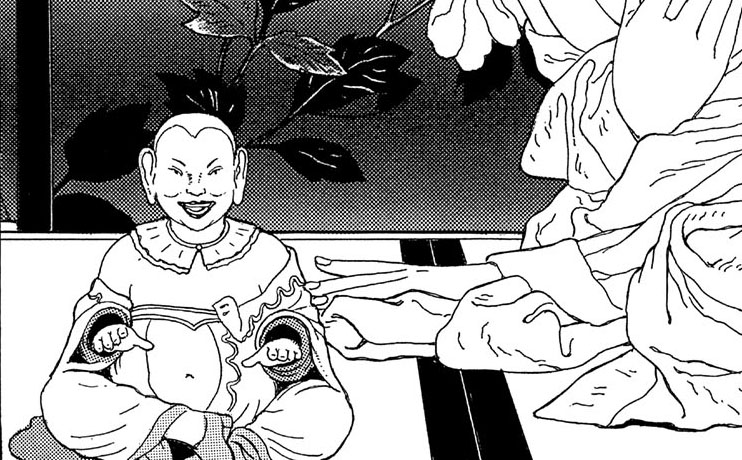
36:00: Back to the advertisements. This isn’t the first time I’d paste something in chat and forget to paste it into any sort of document or save the image and need to go looking for it. Hopefully it’s the last though. Sorry.
37:55: So yeah, he turns The Mouth of Orcus, which is mythically the gateway to hell, into a toilet. Which is one of those “Oh my GOD we’re clever!” moments that people in these stories have… but it is pretty good.
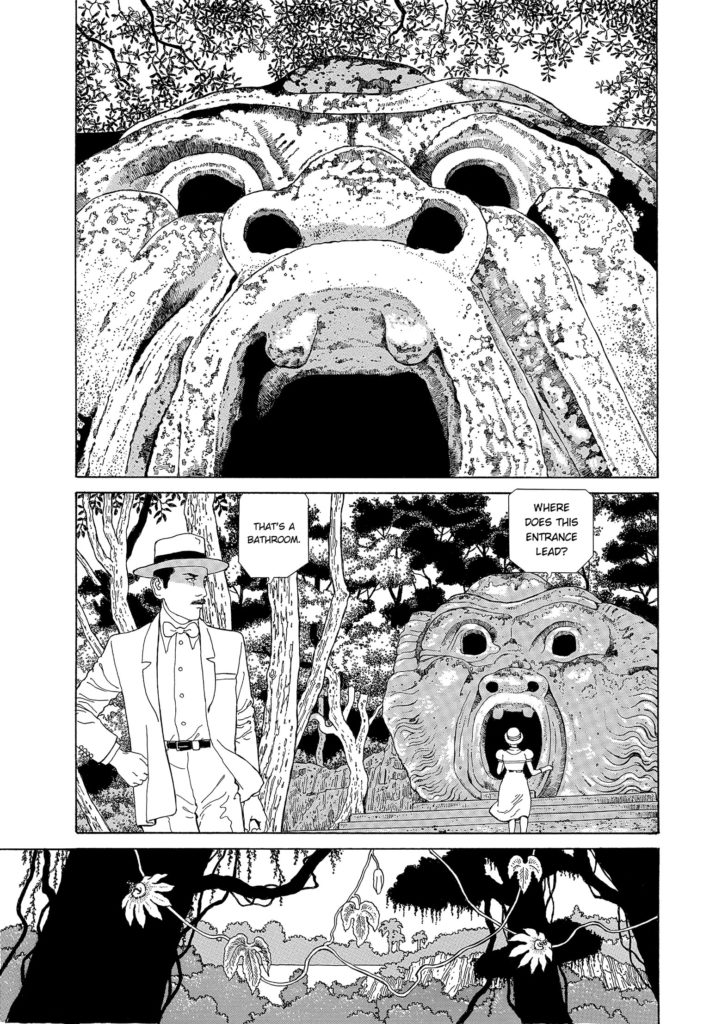
And yeah, that’s a real sculpture from the Gardens of Bomarzo in Italy, the Park of Monsters.
It is not a bathroom, officially, in real life.
You can find out more at http://www.bomarzo.net/.
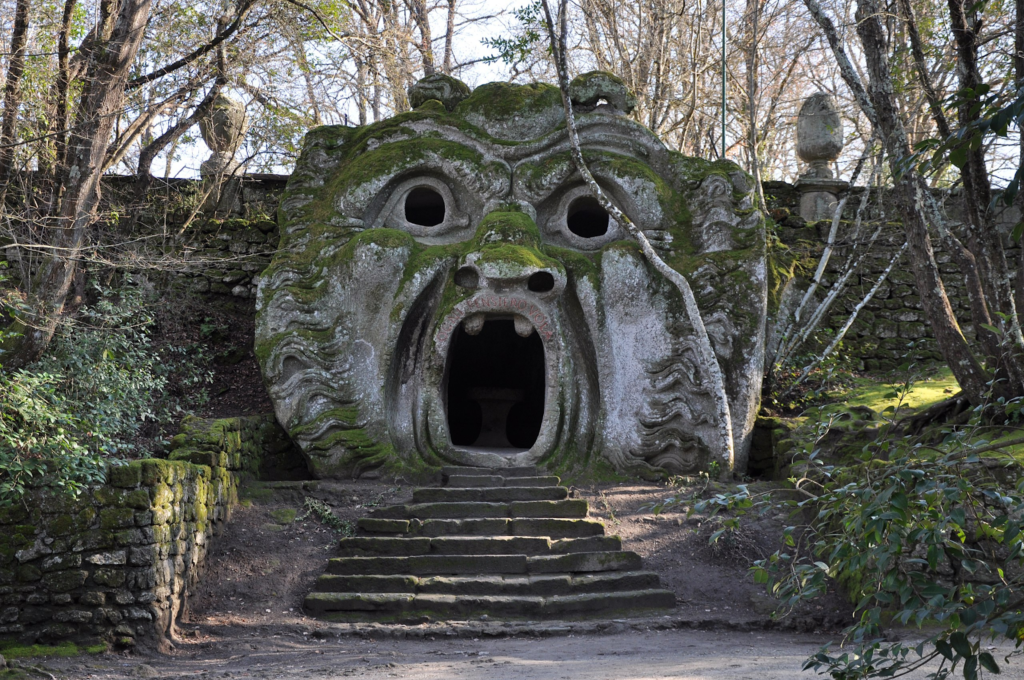
40:00: “Not quite Panorama Island…” Oh Chip. You’re perfect. Disney for adults is still Disney. Like, the theming is pretty high quality at Disney Sea in Tokyo, and they do have beer at least, but yeah, I feel bad that you were so let down.
Wish I had been able to work in a “Florida” joke.
41:07: The tube is pretty good.
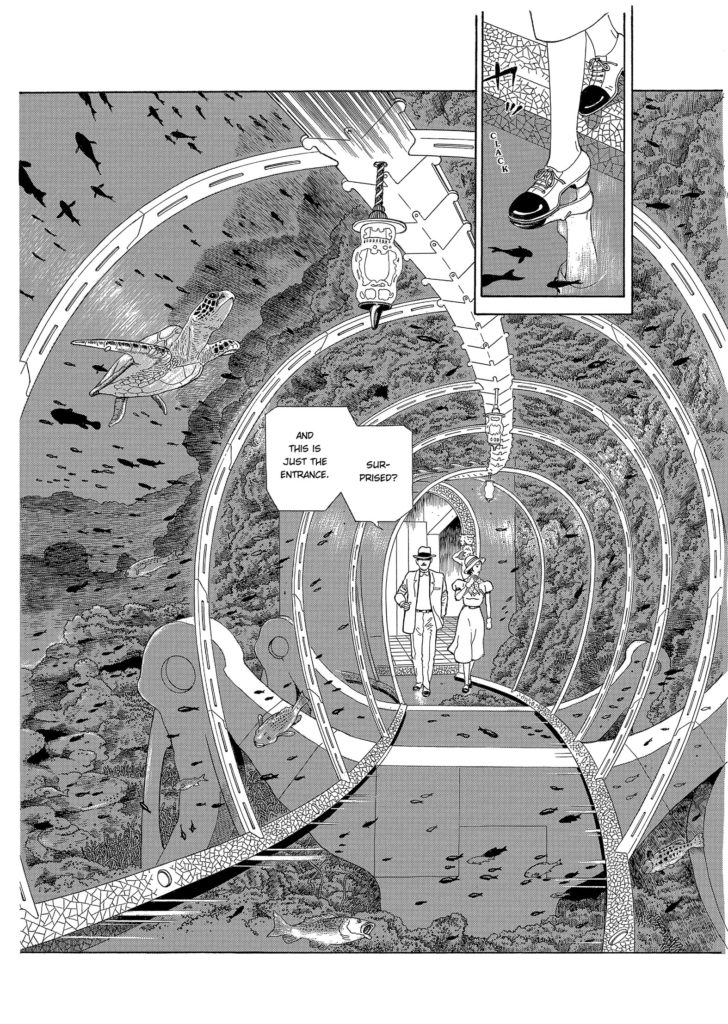
41:45: Yeah, this page where Chiyoko finally becomes completely overwhelmed and falls, and the entire layout of the page falls with her.
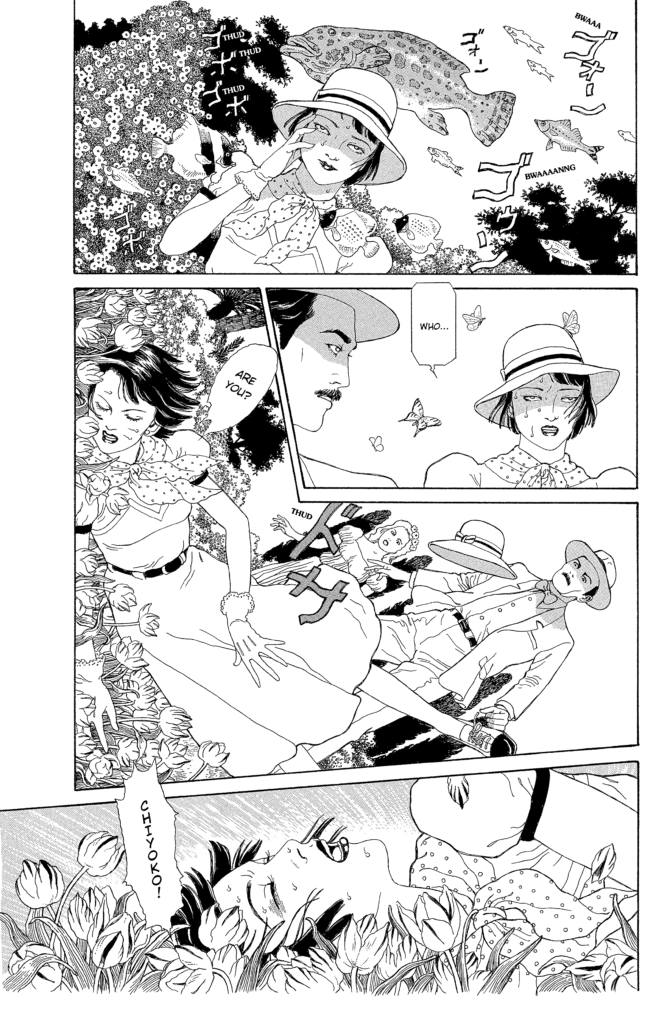
42:11: Shark lady on page 240. It’s just hilarious.
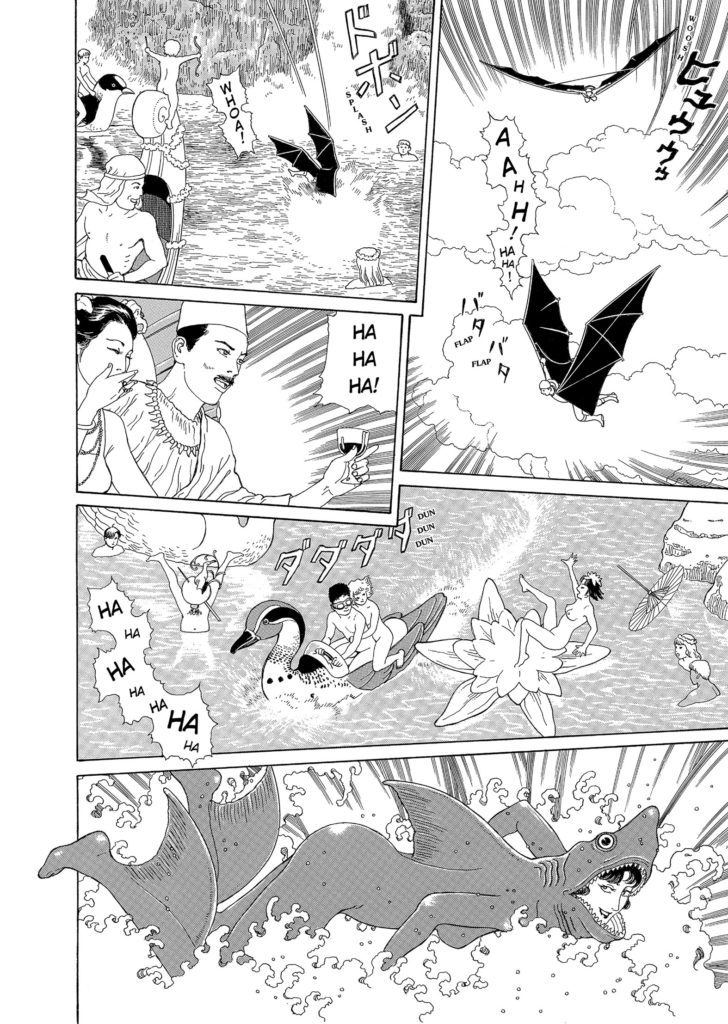
42:30: In for a penny, in for a pound. Here’s the extremely horny drawing of a Mermaid with boobs AND a human butt that David mentions, from the Dragon’s Crown series of video games.
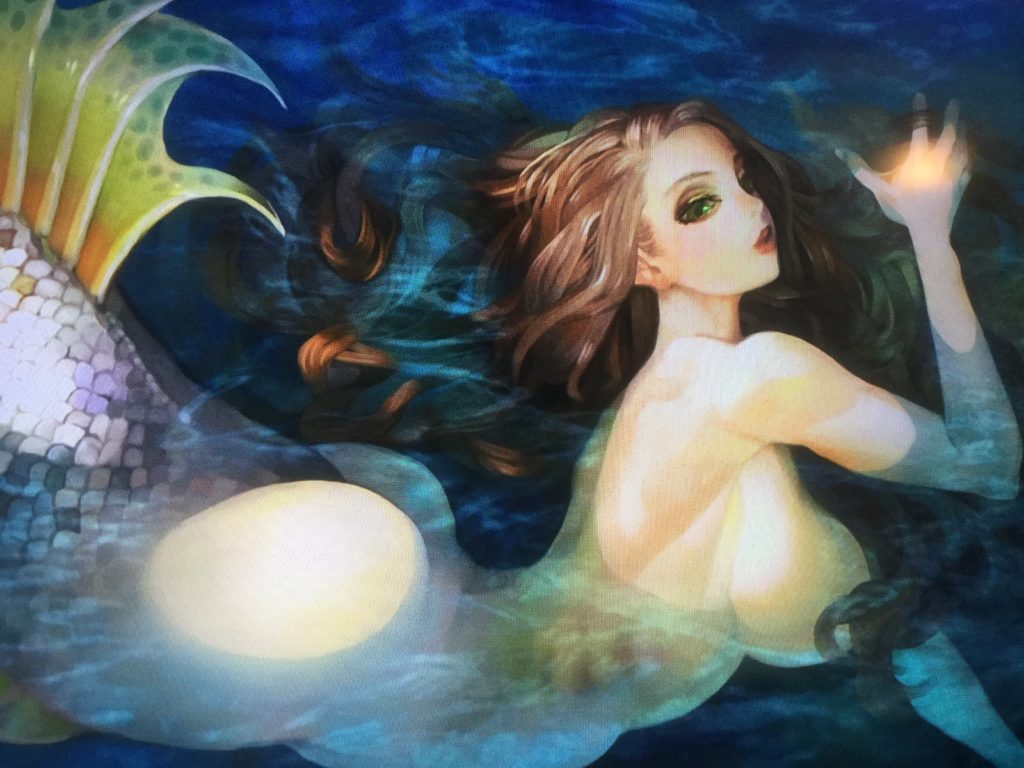
43:35: Yeah the dance of Salome is referenced here too. It’s not subtle, past a certain point.
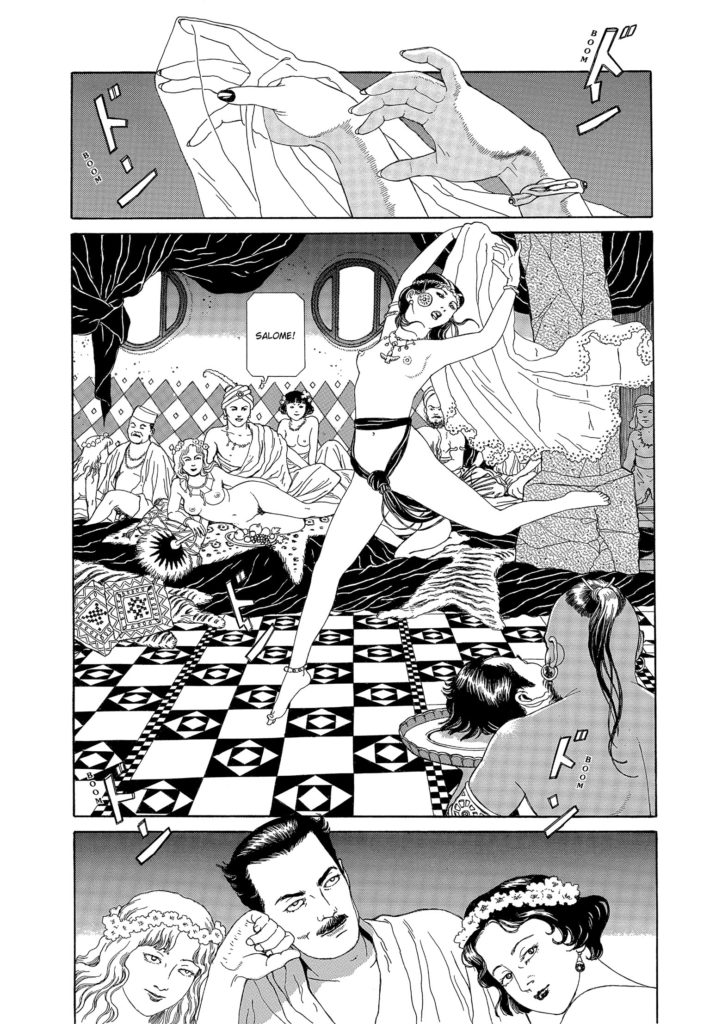
43:53: And then the people stuffed into the horn, with the dog on the horn. Just perfect. We referenced it at the beginning, but here it is again.

44:28: Fritz Lang’s Metropolis Train Face? Or Thomas the Tank Engine? U DECIDE!
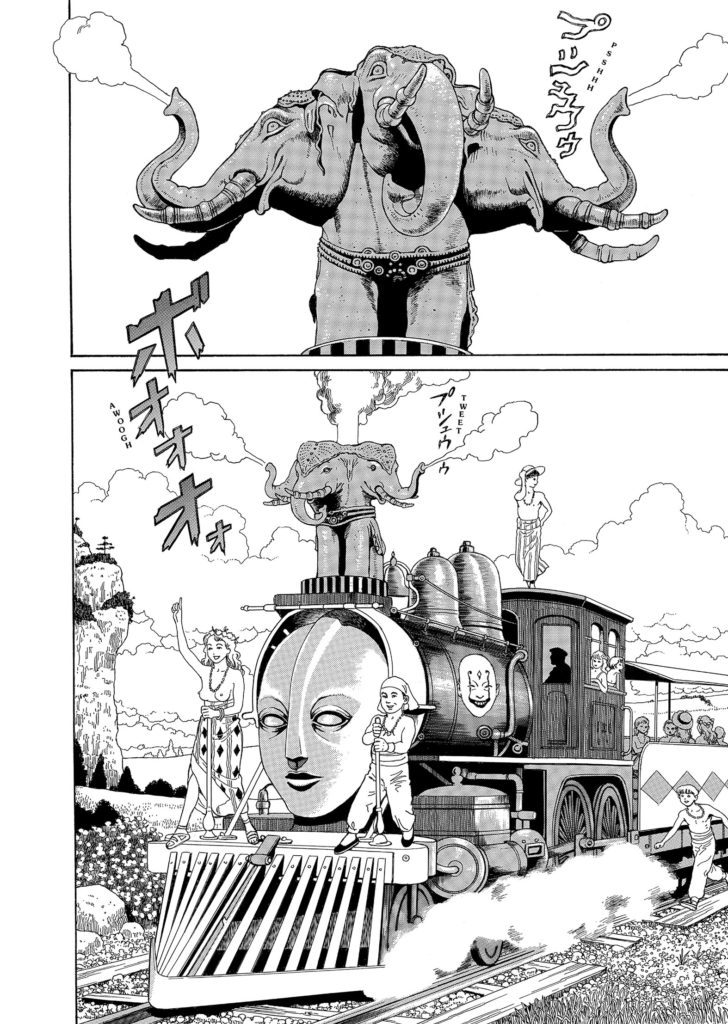
45:00: So here’s one of those colour page spreads, from the front of the book. I stole it from Ryan Sands’ ‘Same Hat’ blog, so thanks Ryan from 8 years ago for providing that. 🙂
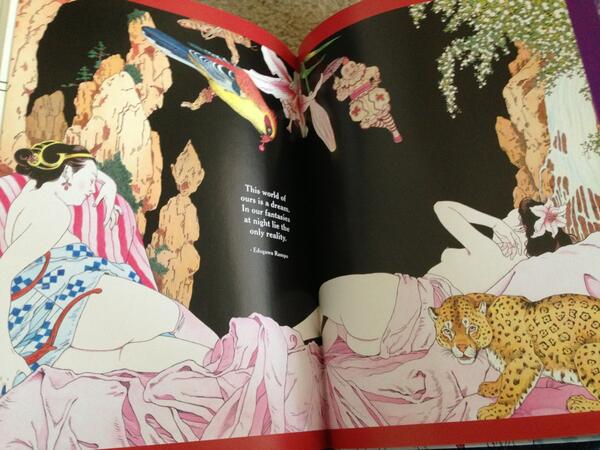
Glad Chip liked it, it’s really quite good colouring and unique to Maruo.
46:20: The thing about adaptations, and this adaptation in particular, is that you’re never quite sure what was in the original and what was the fiat of the person adapting the work. So when we meet this dude with the twirly mustache and the glasses, he’s furious that he hasn’t been well taken care of. Then when we meet him again later, on the island… Well, it looks like he’s being very well taken care of indeed.
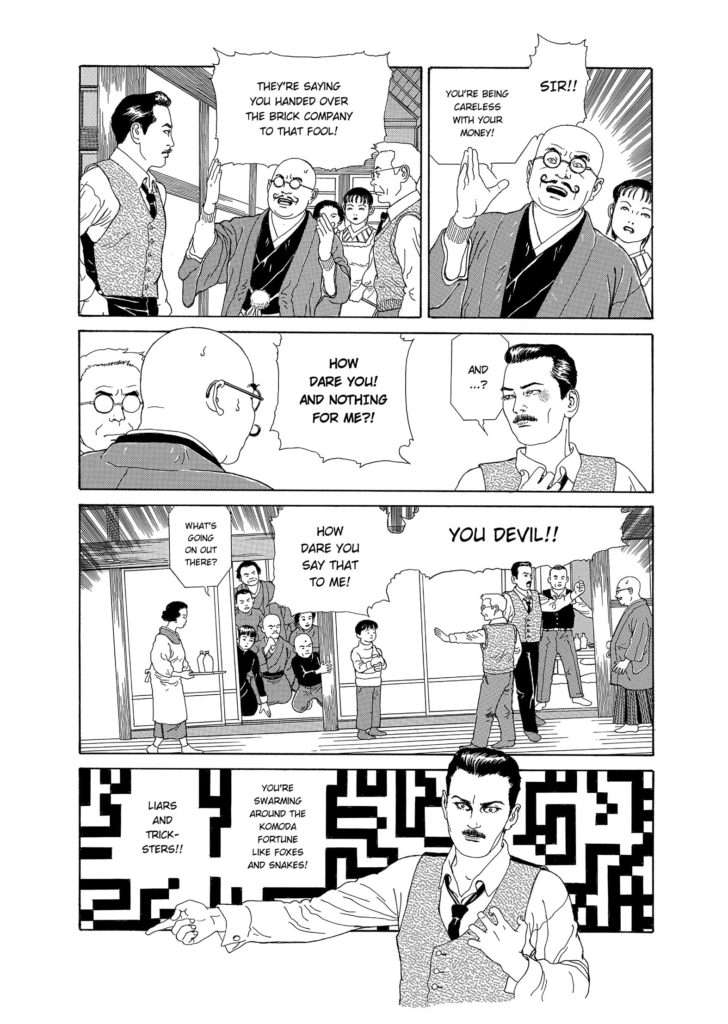
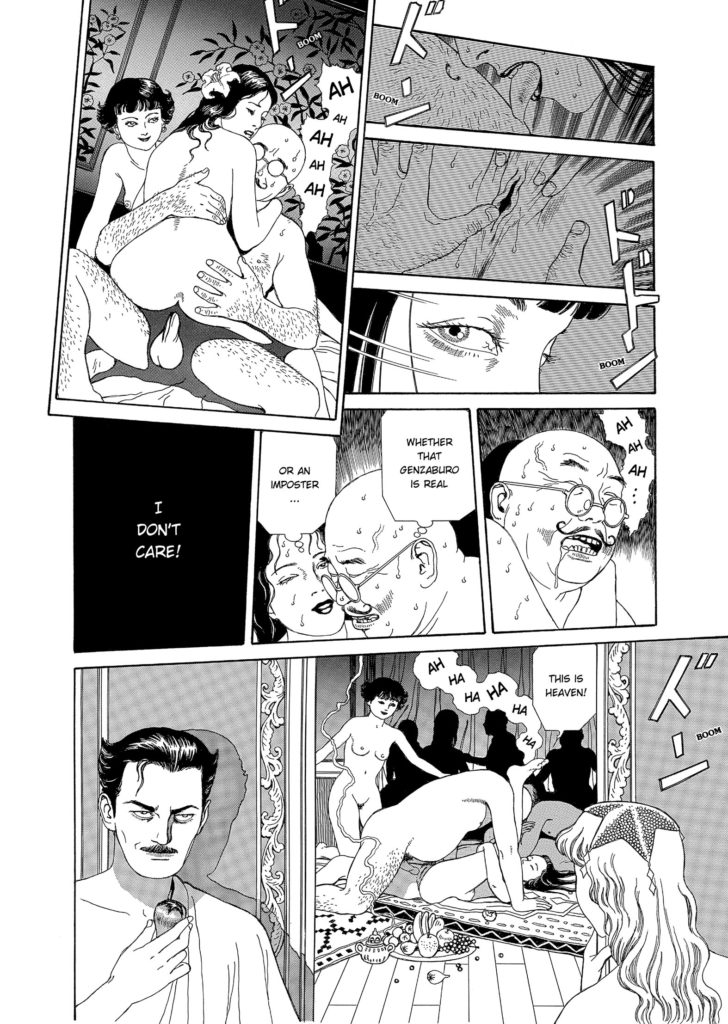
Well we crossed that line. Bring on Dick Fight Island!
47:10: A quick check shows that not only this volume, but various collections of Rampo’s work are available all over libraries and digital lending. So make sure you’ve got a library card, check out the ebooks at your library.
49:40: So Christopher mentions a few other Ero Guro creators who have been inspired by Rampo, and by Maruo. They include:
Usumaru Furuya, author of Lychee Light Club, which is probably closest to Ero Guro work in tone, as well as titles like Genkaku Piccaso, Short Cuts, and No Longer Human. Almost all of which are completely out of print, but there are digital editions floating around.
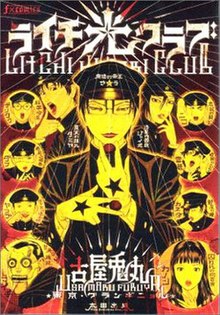
Shintaro Kago, author of Dementia 21 published by Fantagraphics, and Super Dimensional Love Gun published by Denpa.
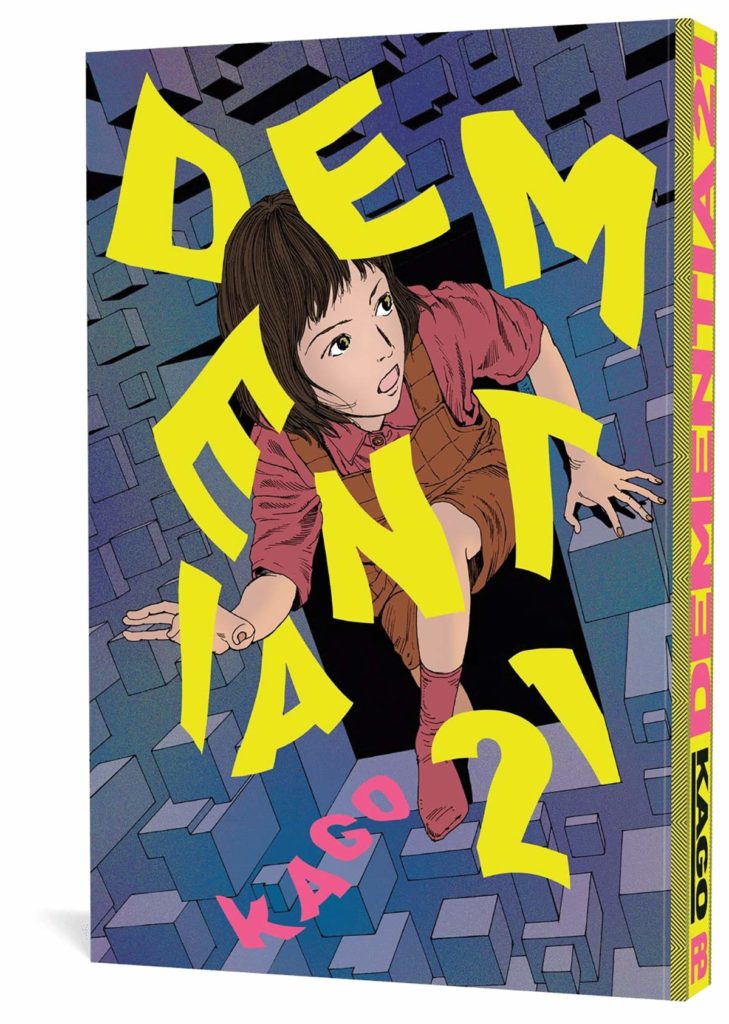
And later Christopher mentions
Toshio Saeki, a fine-artist working in the tradition of Japanese woodblock prints and ero-guro artistic ideas. Interestingly, Maruo doesn’t cite him as an influence anywhere I can find, but it might be fair to say that they’ve both drawn on similar influences throughout their careers. Saeki-sensei’s art was doing the rounds in a big way 4 or 5 years ago when Last Gasp released a collection of his work. That Last Gasp book seems to be out of print though.
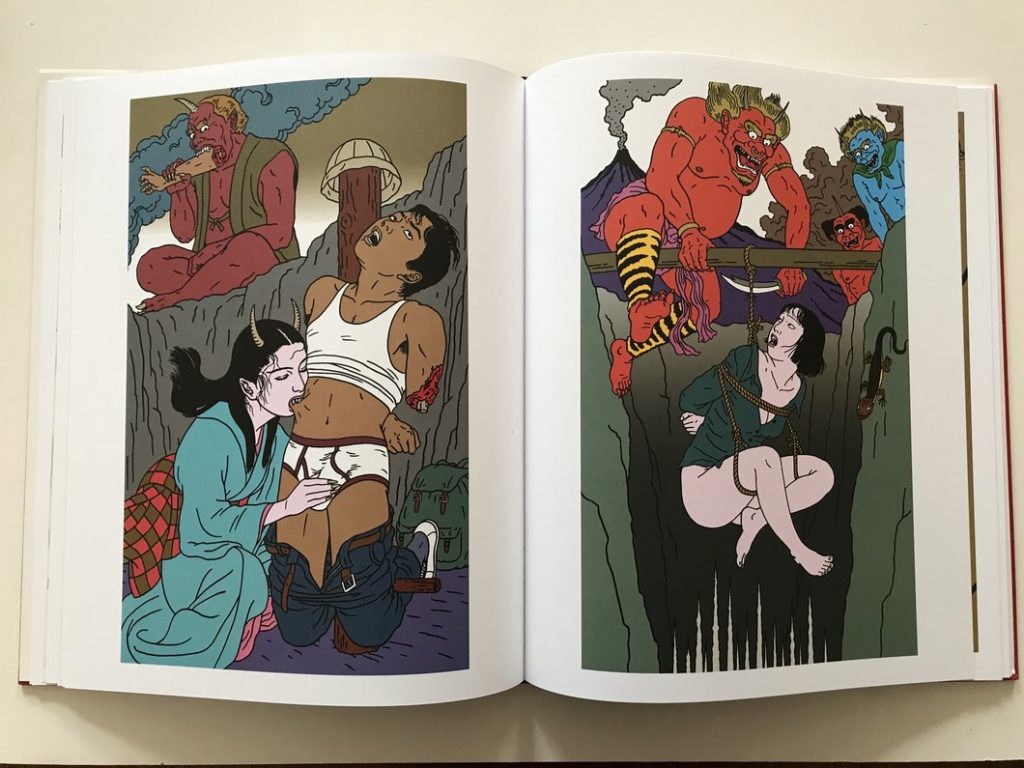
…and in researching him in Japanese, I discovered that Maruo credits horror manga icon Kazuo Umezu as his favourite author, and gives major props to French BD artist Enki Bilal. We’ve covered both of them in show notes previously, and frankly, this is getting a little long.
50:20: Recommended for fans of J.H. Williams’ work, like Batwoman and Promethea.

50:45: And this reminds David of the graphic novel Muse by Terry and Rachel Dodson, as it’s another craft-heavy book with very sexy and strange bits too.
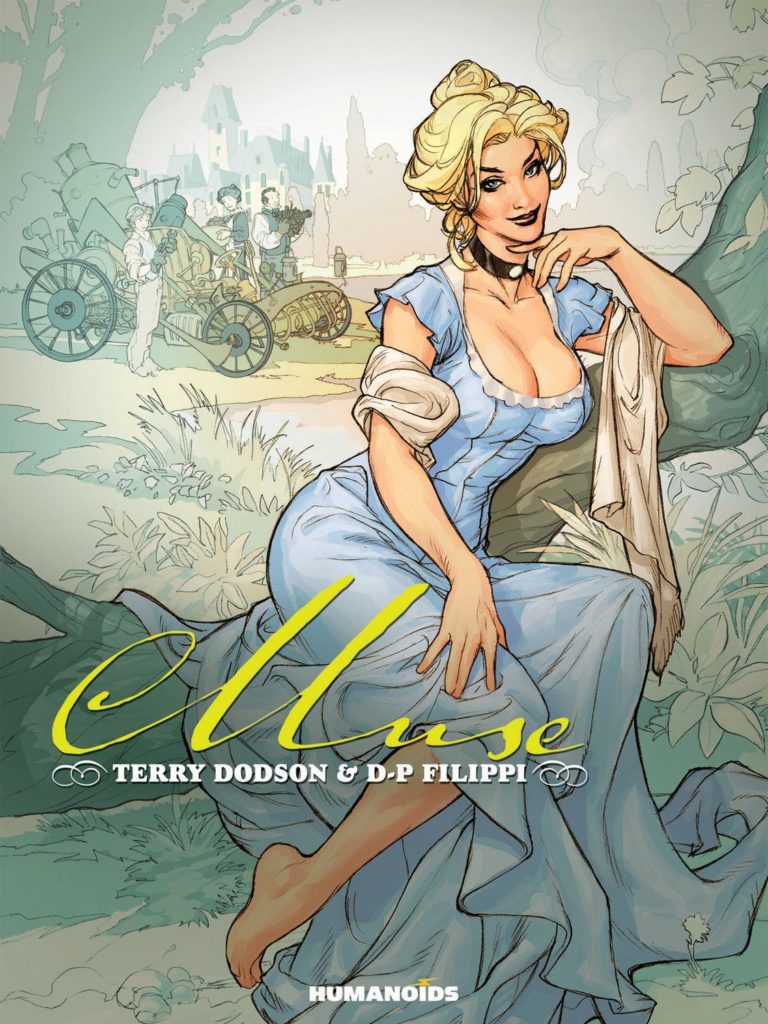
52:54: And Chip’s recommendation if you liked this and wanna read a Western-produced comic is the horror anthology Creepy. Currently in print from Dark Horse, there are a number of themed collections of classic work including Corben, Toth, Wrightson, and Ditko. You can’t really go wrong with any of those, but Toth or Wrightson might be closest to what Maruo is doing.
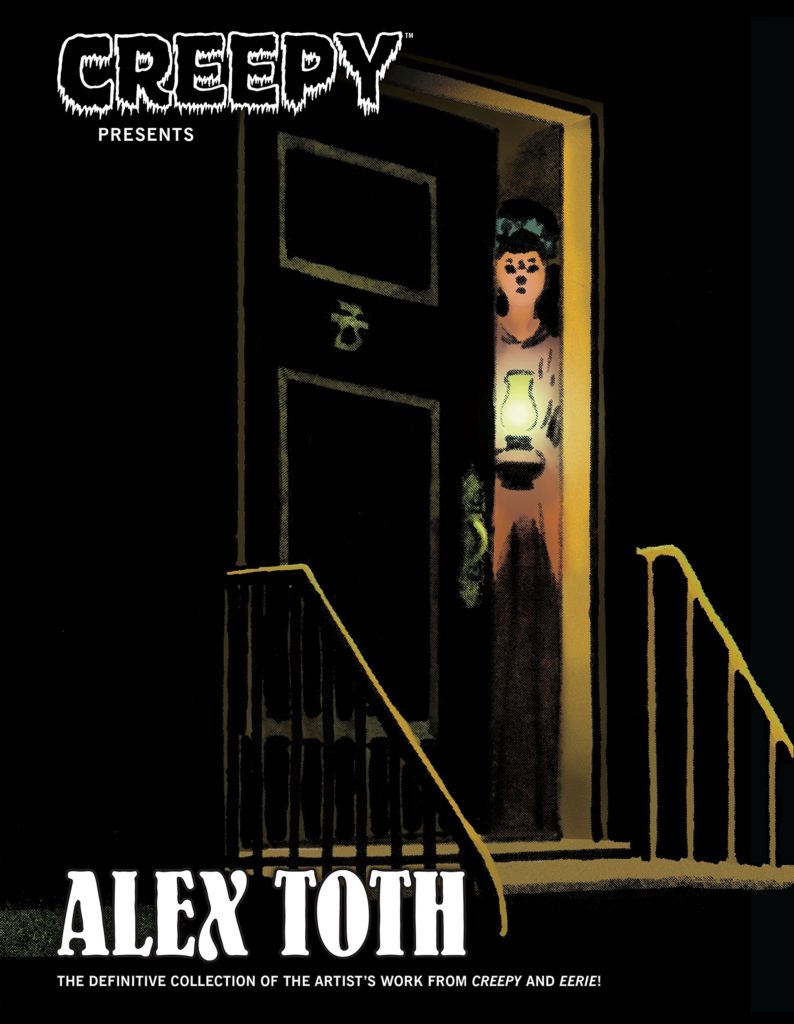
53:30: So here we go, let’s do the whole bio of Maruo-sensei.
Suehiro Maruo (b. 1956) in Nagasaki, Japan. As Deb mentions earlier in the podcast, he dropped out of high school to try to break into manga in his teens, but was told by the editors of Shonen Jump that his work was inappropriate. He worked at a printers for a while, and officially debuted in 1980 in an erotic comics magazine, and his first book collection released in 1982. He has created nearly 20 volumes of original work, in addition to countless illustrations, articles, and work for all kinds of art and design stuff.
Unfortunately The Strange Tale of Panorama Island is the only book of his that’s in print, but previous English-editions of his work include Mr. Arashi’s Amazing Freak-Show, Ultra-Gash Inferno, and that story in Comics Underground Japan we mentioned. Interestingly, there are two short illustrated semi-comic things that are about Japanese culture, called “How to take a Japanese Bath” and “How to Rake Leaves” that are actually really great little curiosities, sort of difficult to find these days, but if you like it when this podcast sends you down the rabbit-hole, go look those up. Here’s the French listings for both, I can’t find English listings but the internet tells me they were published, and that Tuttle published them.
Speaking of, if you can read French, Italian, or Spanish, there are lots of romance-language Maruo books out there for you to enjoy if you’re looking for more. But then, you probably already knew that? Anyway our pals at The Beguiling, www.beguiling.ca, have a bunch of Maruo in-stock right now.
You can check out this scene-report on an interview between Maruo and another excellent mangaka, Atsushi Kaneko (Bambi and Her Pink Gun). https://www.blackhookpress.com/the-blog/atsushi-kaneko-maruo-suehiro-artist-talk-night-asagaya-loft-31082018
And for the final word on all things Suehiro Maruo, you can find out more about him at his official website, http://www.maruojigoku.com/
Which brings us to:
Ero-Guro is described on wiki as “an artistic genre that puts its focus on eroticism, sexual corruption, and decadence.” Something that is erotic, and grotesque. It’s not necessarily just gore, which is often a mistranslation. There’s a lot of great history about it on Wikipedia, and rather than regurgitate it here, if it interests you at all go check it out. https://en.wikipedia.org/wiki/Ero_guro
Which brings us to :
Imo-mushi, The Caterpillar: An important Edogawa Rampo story about a soldier horribly disfigured in the Russo-Japanese war, released to great popularity and acclaim. In 1939 during the outbreak of the Second Sino-Japanese War, Rampo was ordered to stop publication of the story by the Government as its popularity and anti-war message would hurt… their war efforts. It was republished after the end of World War II. It was adapted into a manga by Suehiro Maruo in 2009 and is one of those many of his books that’s in other languages but not in English. I’m kind of shocked no one went after this one? I mean, it’s disturbing and gross, but… so is war, right?
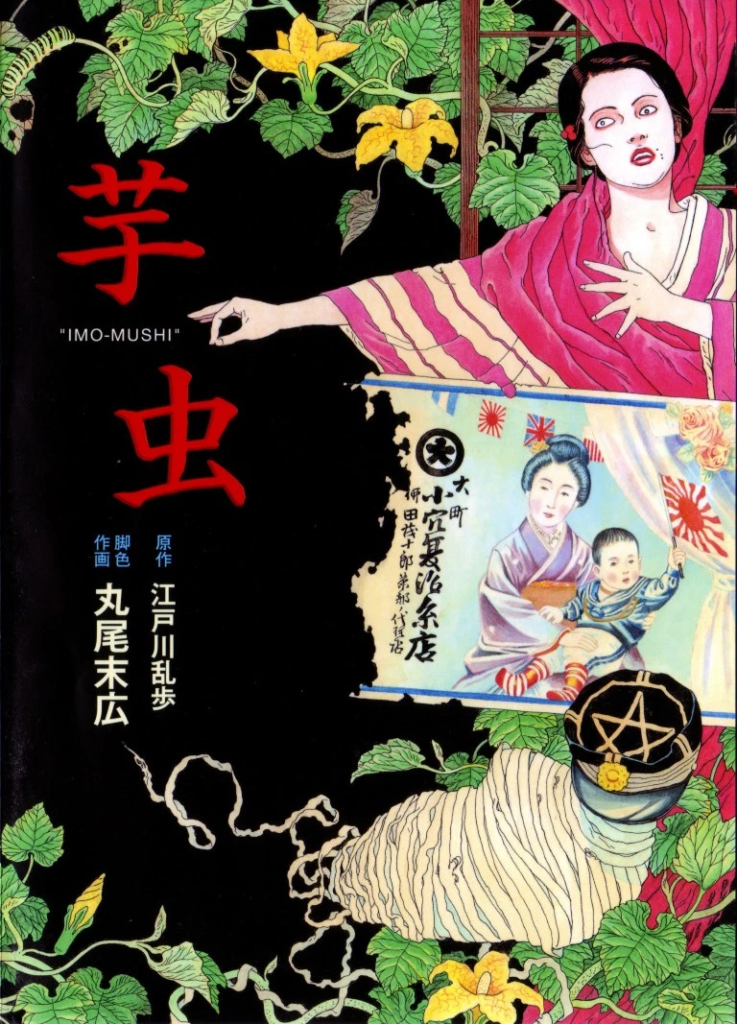
Here’s a clip of an interview with Maruo-sensei, with a few excerpts from The Caterpillar and some of his other work.
Which brings us, finally, to:
Dalton Trumbo (1905-1976), an American writer and film director best known for scripting Roman Holiday, Spartacus, and Thirty Seconds Over Tokyo. He was a staunch anti-war activist, refused to testify before the House Un-American Activities Committee, and was blacklisted from Hollywood for it. The specific story Deb is referring to is Johnny Got His Gun, which was written as a novel in 1938 (a few years after Rampo’s The Caterpillar), and then adapted by Trumbo into a film in 1971, because sadly the necessary message of being anti-war just keeps being relevant, albeit with different wars. Like The Caterpillar, a soldier suffers horrible disfigurement after a shell explodes near him, and he becomes a prisoner in his own body. Holy shit, the novel was serialized in The Daily Worker?! This is a rich reference we got here.
https://en.wikipedia.org/wiki/Johnny_Got_His_Gun
And, as mentioned, this story (particularly the film version) served as the inspiration for Metallica’s song One, off of the album …And Justice For All from 1988.
I do not believe I’ve ever seen this video, but I am familiar with the part that starts at 4:45. This is… This is a lot for MTV in 1988. Holy shit. Now I wanna read the Wikipedia for this song but it’s late and like, I’m sure you’d all like to actually listen to this episode and read these show notes at some point.
56:00: Hiroaki Samura is the author of Wave, Listen to Me! which we covered in episode 5 of Mangasplaining, as well as the series Blade of the Immortal. A 30-volume seinen action/horror title about a swordfighter who can’t die and desperately wants to, the story does feature lots of torture and many hallmarks of Ero Guro storytelling across its 30+ volumes, but only in fits and starts, in between more ‘traditional’ kinds of violent conflict, swordplay, etc. It’s the kind of thing that people think of as a badass series with one story that went too far, whereas most Ero Guro stories are described as having gone entirely too far and it wasn’t particularly badass in any way. Maybe that’s so fine a distinction that it’s basically invisible, but there’s a reason that the stuff people find a little more shocking in Blade of the Immortal comes after the series is a long running hit already… YMMV. But if you check out any of his art books, well, you’ll see. I don’t recommend it though!
58:30: For those keeping track at home, this is the second time Chip has brought up publishing books.
59:12: THE BREAK! A word from “our” “sponsors”
So this week’s question is: “Why dont publishers hire letterers to design/translate sound effects? Are they just too cheap?” by @kuro_kamikaze on Twitter.
David gives a great answer with lots and lots of context. David mentions the lettering of Studio Proteus as being particularly good, and you can see a complete list of their Award nominated-work and series’ on their Wikipedia. https://en.wikipedia.org/wiki/Studio_Proteus
David also mentions a letterer he works with at VIZ, @brandonbovia on Twitter. Go give him a follow.
Here’s that font, Comicraft’s Joe Kubert font, btw.

Christopher and David mentions 100% Authentic, and that’s a reference to Tokyopop’s gimmick in the late 90s of moving away from flipping the manga (reading in the Japanese right-to-left orientation), from translating the sound effects, and printing them at a smaller size (that’s become the default manga size). These were mostly cost-cutting measures, to get single volumes of manga under $10 (where they were previously $15-$17 at least), and they absolutely, 100% changed the entire industry with this move.
And yeah, “lettering and retouch” only barely covers the amount of work that goes in.
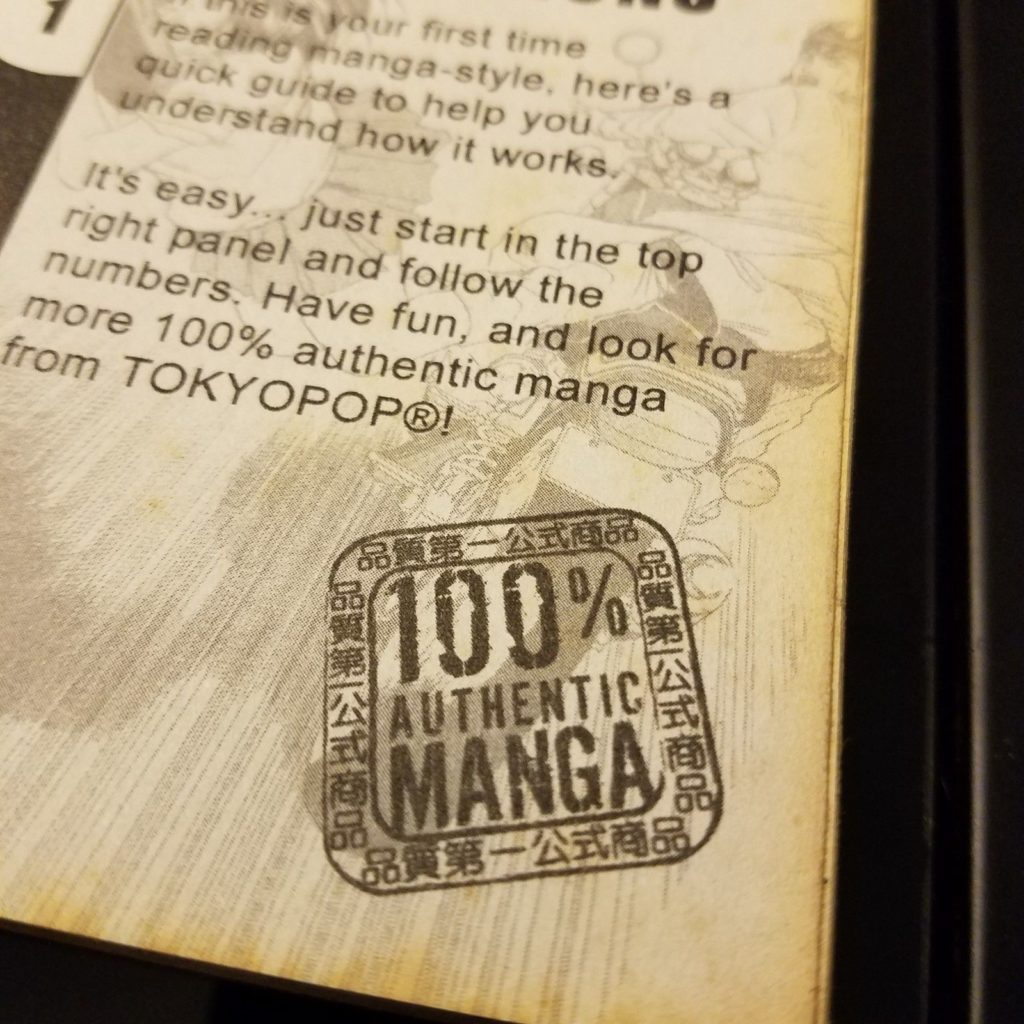
Deb mentions the letterers Phil Christie @PhilSChristie and Sara Linsley @salinsley on Twitter, sharing videos of their lettering process. These are some neat videos!
David shouts out letterer and artist EK Weaver @bigbigtruck, who lettered the manga series Again!!.
Deb shouts out Evan Hayden @electrofreeze, letterer on The Strange Tale of Panorama Island and co-founder of the Same Hat! blog we mentioned earlier.
And thanks to all letterers who are the unsung heroes of many a manga.
Even given everything this episode, that scene from Sex Criminals that Chip mentions is just too filthy to include here. (Just kidding… here it is:)
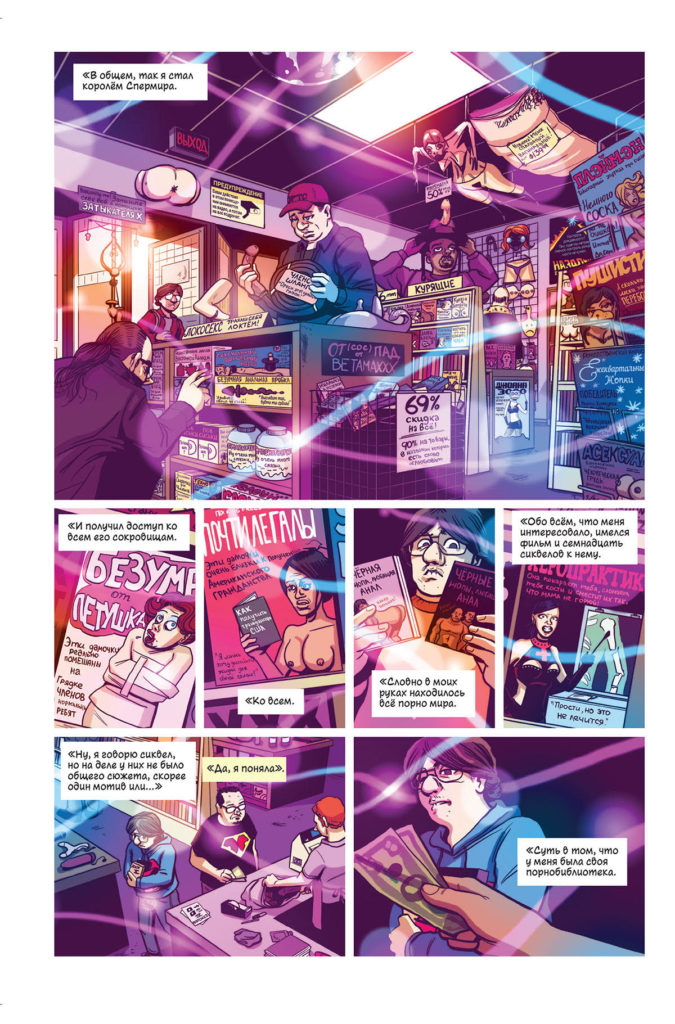
…and that’s this episode of Mangasplaining!
Shout out to Local Comic Shops, who provided several us copies of The Strange Tale of Panorama Island this week! Find a comic shop near you at comicshoplocator.com. Thanks again to D.A.D.S. for their musical accompaniment this week, and we’ll see you again next time as we read Takako Shimura’s Even Though We’re Adults Volume 1.

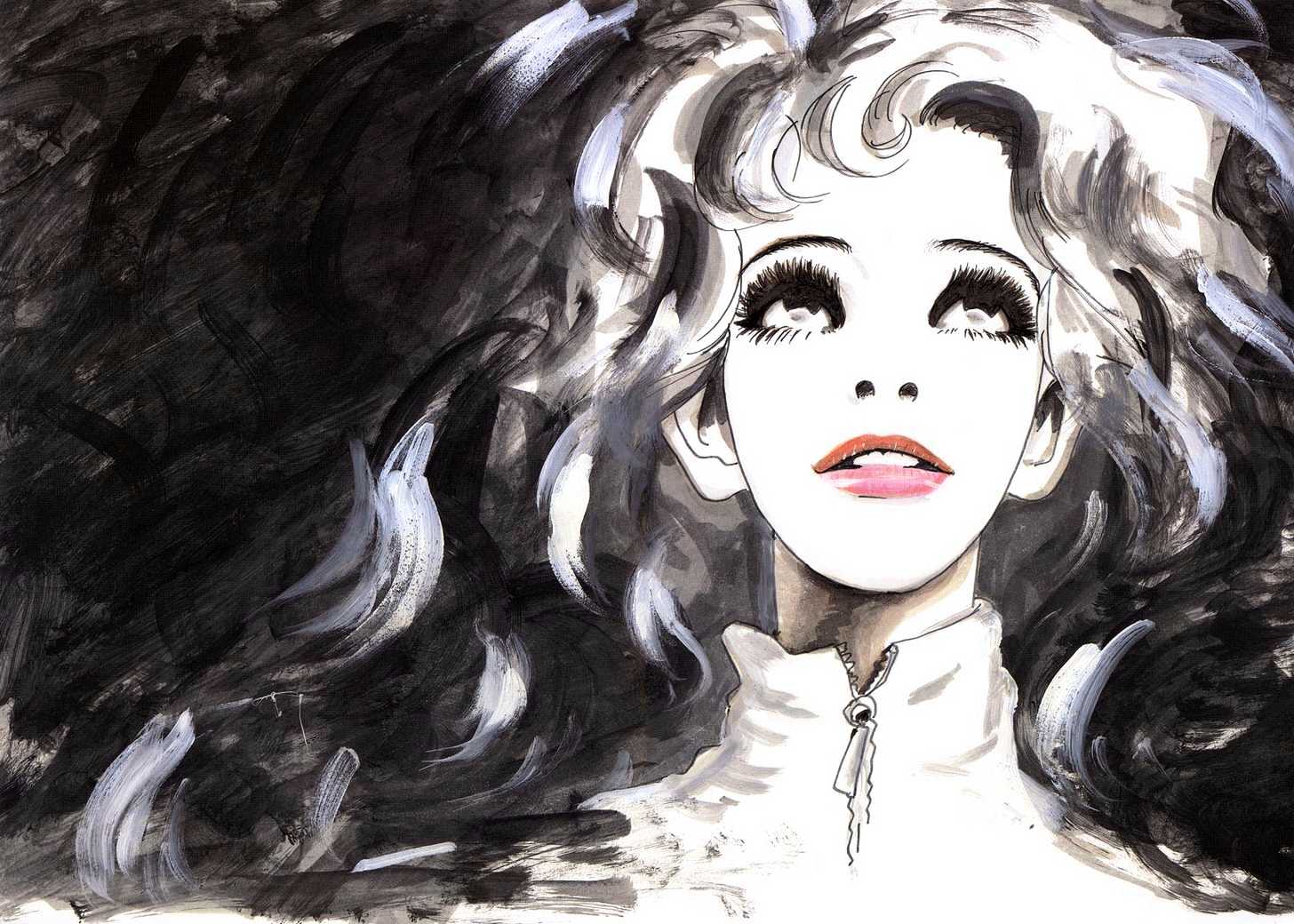
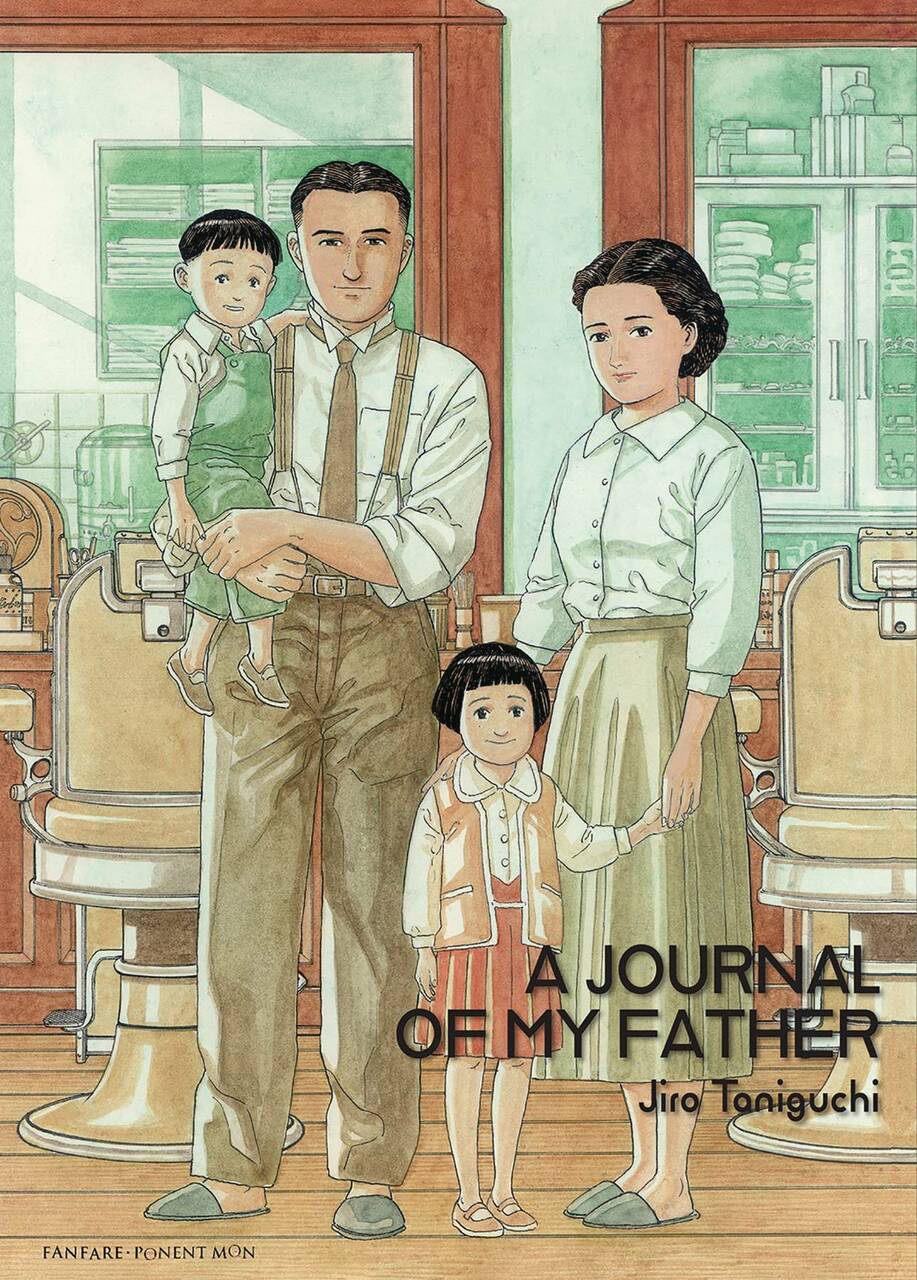
This has to be the most informative episode of Mangasplaining to date. Where else will I get an art history lesson with my manga conversation?
I first learned about Maruo’s work from a mention in the Fredrik Schodt’s “Dreamland Japan” book, which is a look at some non-mainstream manga. I think “mention” probably belies the amount of space dedicated to Maruo and reproductions of some of his work, including that infamous scene of MacArthur. I wonder if Maruo is the most well known manga creator in the West with the least amount of work available in English.
I did approach reading this book with some trepidation, because with an adapted work I always wonder if what works or doesn’t work for me is more attributable to the source material or the creator doing the adaptation. As I started reading, I was definitely drawn into the mystery, so I’m sure I can credit Rampo for that; but the pages and pages of luscious art that hit you once you’re on the island, definitely Maruo is the driving force there.
On my initial reading, I was REALLY put off by the ending, which has the detective just sort of show up with the ‘case’ solved, and I absolutely attributed that to Rampo rather than Maruo. It bothered me a lot less this time because I knew what was coming, and I was able to just luxuriate in Maruo’s work fully. That said, everyone else’s perspectives also really illuminated the book for me. Glad you dug this episode! – Christopher
That department store is the first of three iconic, giga-clocked subway department stores built around the same time: the Ueno Chikatetsu Store (lit. “Ueno Subway Store”) that once stood at Ueno Station! Google “上野地下鉄ストア” for some fantastic pictures of the real thing! I did some research for you – here are some mega-interesting details.
Opened by the Tokyo Chikatetsudō company (a predecessor to today’s Tokyo Metro) in 1931 (Shōwa 6), the building was a highly successful bid to diversify revenue streams beyond the subway (incidentally, Asia’s first subway) itself. The enormous clock face was 20 meters in diameter – the largest electric clock in the world at the time – and in the stead of numbers figured the phrase “地下鉄ストア” (“Subway Store”). Those numbers – or rather, characters – lit up at night: one Tokyoite’s grandfather recalls that although the store itself was quite unremarkable and folksy, the grand light-up clock was impressive and visible from far away, and thus drew in customers in great numbers. The clock face had a diameter of 20 meters, and was apparently the largest electrical clock in the world at the time!
Though neither the building nor its clock remain, this very store is today regarded as Japan’s first underground shopping street – a phenomenon that is now ubiquitous and found all over the country. What an unsung hero of a building.
Sources consulted:
•https://rail-to-utopia.net/2018/06/776/
• http://syowakara.com/04syowaB/syowaB15chikatetu.htm
• http://www.kodokei.com/ot_012_m.html
Wow this is an incredible comment! Thanks so much for all of this info, this is incredible!
Okay, took me a while to get to this episode, but several things:
1. The Google translated version of the Japanese Wikipedia article for Edogawa Ranpo’s original novel says that it was “serialized five times from the October 1926 issue to the April 1927 issue.” So, the story predates the death which means that the reason for the suicide could have been in an rewritten collected edition put out later or something Maruo made up for this adaptation.
2. The aforementioned Wikipedia page doesn’t mention Maruo’s adaptation, but does mention a different adaptation from the 1970s by Ryoko Takashina that looks _very_ different. An image search for 血とばらの悪魔 will give you some (Japanese language) blogs with pictures. Worth checking out!
3. Edogawa Ranpo apparently did marry, however anyone wanting to know more about Ranpo and his writing on homosexuality should look for the book Writing the Love of Boys: Origins of Bishonen Culture in Modernist Japanese Literature by Jeffrey Angles which has several chapters specifically about Ranpo’s work. (I haven’t read this, but it looks interesting!)
4. The mention of Imo-mushi, The Caterpillar reminded me of a story I read a long time ago called The Red Laugh by Leonid Andreyev (1904) which was an anti-war story about a soldier who loses multiple limbs in the Russo-Japanese war and suffers PTSD.
5. Sadly, my Russian isn’t good enough to translate most of the stuff in Sex Criminals, but it looks like “Sexbow” elbow was translated as “lokosex” based on a pun with loktyem (elbow) and loko (crazy?), so they definitely made an effort!
For those wanting to read the original novel it was published in translation the same year as the manga translation.
https://uhpress.hawaii.edu/title/strange-tale-of-panorama-island/
On the whole ero-guro phenomenon in Taisho Japan an excellent book is:
Silverberg, Miriam
Erotic Grotesque Nonsense: The Mass Culture of Japanese Modern Times
Berkeley: University of California Press, 2007
No Longer Human By Usamaru Furuya is coming back into print in September.
https://www.penguinrandomhouse.com/books/712982/no-longer-human-complete-edition-manga-by-usamaru-furuya/
That’s really, really good news! Thanks!
If I remember right, there are other Rampo stories in which Detective Akechi shows up at the end and basically says “I’ve been a step behind you in the background the whole time. I know what you did and how you did it.” and that’s the end.
The greatest films in the Ero-Guro-Nansensu tradition, to my eyes, are Seijun Suzuki’s Taisho Trilogy, Zigeunerweisen, Mirage Theater, and Yumeji. Those films, and adaptations of Rampo’s own stories, like Watcher in the Attic and Beast in the Shadows, have really helped me come to more of an understanding of Maruo’s manga. Yumeji might be the most visually dazzling film set in the Taisho era. Like what Maruo is doing, Suzuki uses a lot of the art from the era as a guide for the way people pose in his scenes.